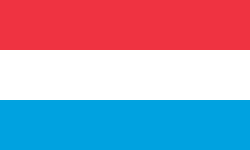Flags
1/202
Earn XP
Description and Tags
Name | Mastery | Learn | Test | Matching | Spaced |
|---|
No study sessions yet.
203 Terms
Costa Rica
Shares the ideals of French Revolution of 1848: freedom, equality, and brotherhood.
Blue = the sky, opportunities, intellectual thinking, perseverance, infinite, eternity, and ideals of religious and spiritual desires.
White = clear thinking, happiness, wisdom, power and beauty of the sky, the driving force of initiatives to search for new endeavors, and peace.
Red = “civilization of the century” and the sun casting on the country the “first rays of its true independence”, the warmth of the people, their love to live, their bloodshed for freedom, and their generous attitude.
The seven stars in the coat of arms = the seven provinces of the republic. The civil flag omits the coat of arms seen on the state flag.
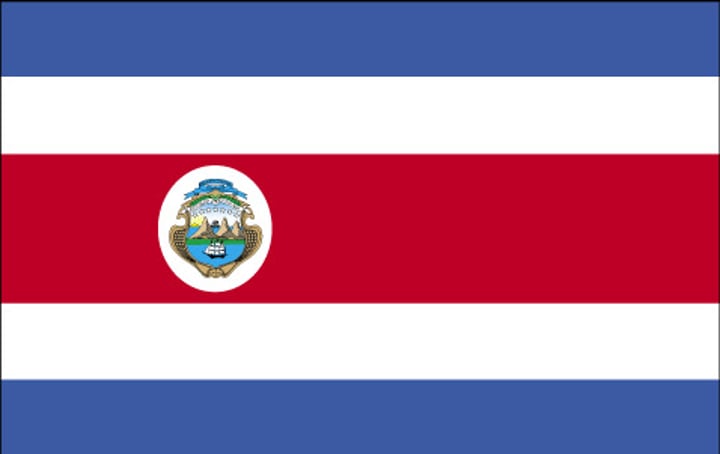
Kiribati
Frigate bird = power, freedom and cultural dance patterns.
Rising sun/tropical sun as the country lies astride the Equator.
Sea = the Pacific Ocean which surrounds the country.
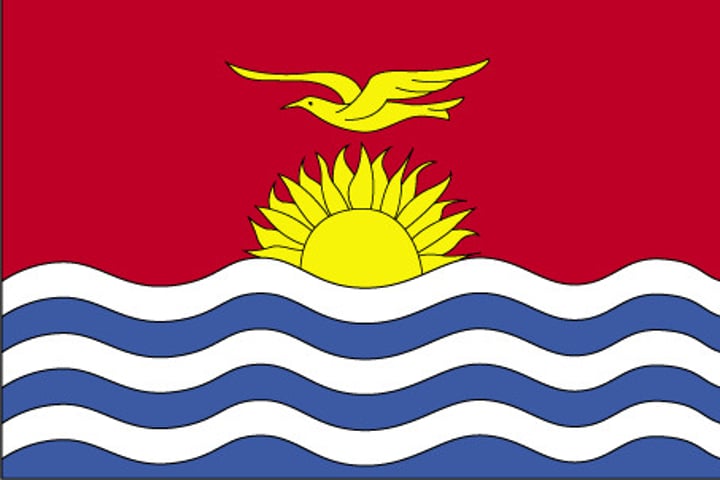
Paraguay, Paraguái
Colors inspired from the flag of France to show independence and liberty, and the coat of arms represents the country’s independence.
The emblem on the reverse side is the seal of the treasury: a yellow lion below a red Phrygian/liberty cap on the top of a pole (symbolizing courage) and the words Paz y Justicia ("Peace and Justice"). The only national flag with a unique design on each side.
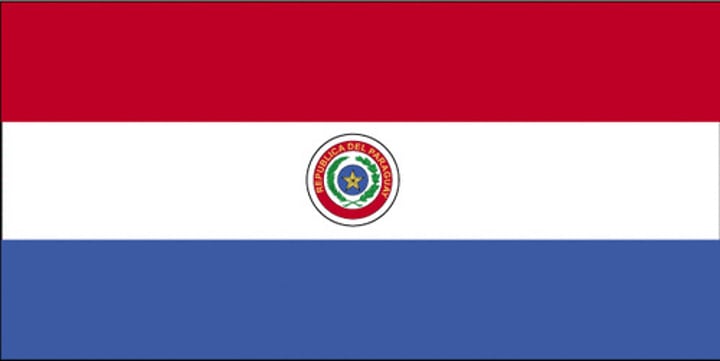
Afghanistan
Black = its troubled 19th century history as a protected state.
Red = the blood of those who fought for independence (specifically, the Anglo-Afghan Treaty of 1919), or progress.
Green = hope and prosperity for the future, agricultural prosperity, or Islam.
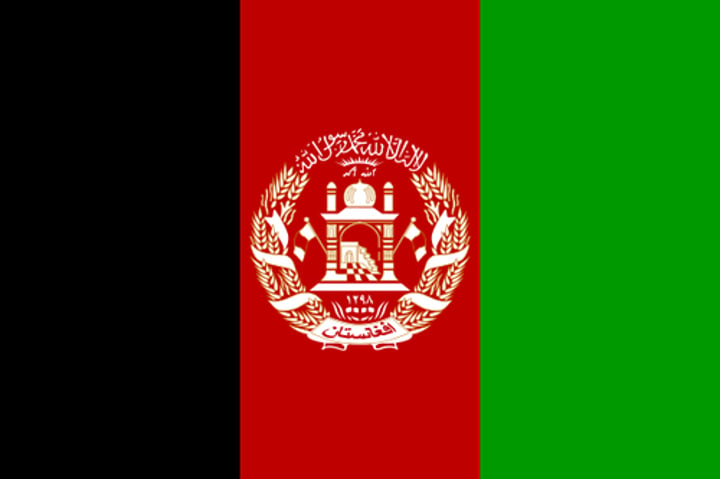
Shqipëri, Shqipëria (Albania)
The red stands for bravery, strength, valor and bloodshed, while the Eagle represents the sovereign state.
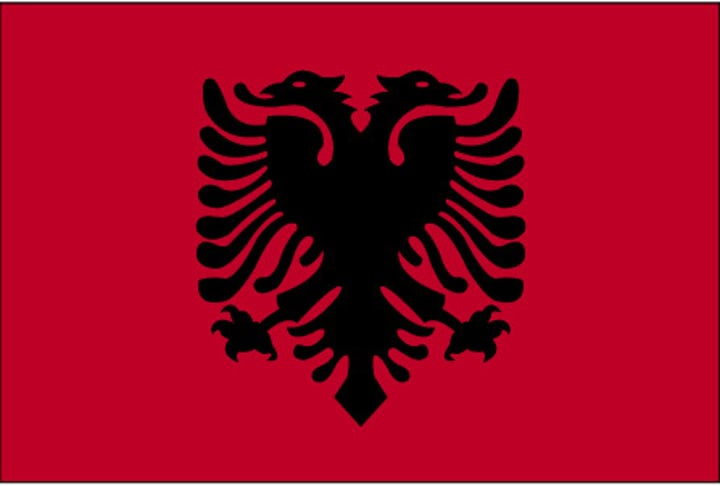
aljazayir (Algeria)
Highlights cultural heritage, but there are different interpretations of its elements.
Green = Islam (or green + white), earth and agriculture.
White = purity, peace.
Crescent and star = symbols of light, symbols of Islam.
Star = five pillars of Islam.
Three colors = the three countries of the Maghreb and the ideas of union.
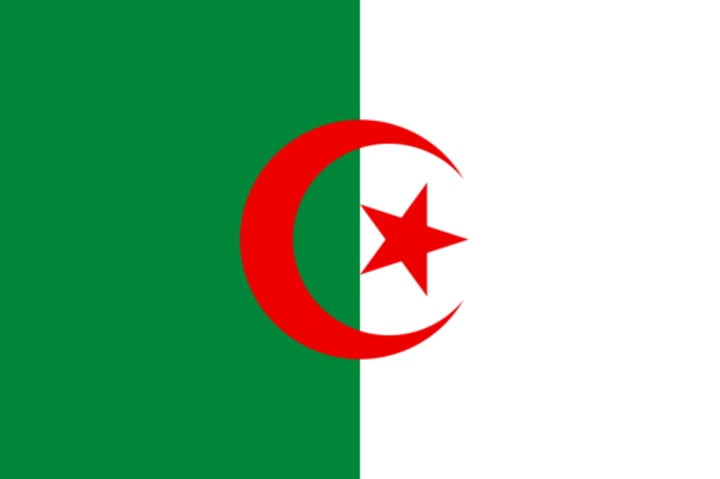
Andorra
Related to the flags of Catalonia, Foix, and France, the lands historically linked with the country. The coat of arms contains historical symbolism to Bishop of Urgell, Count of Foix, the Principality of Catalonia, and the Viscounty of Béarn.
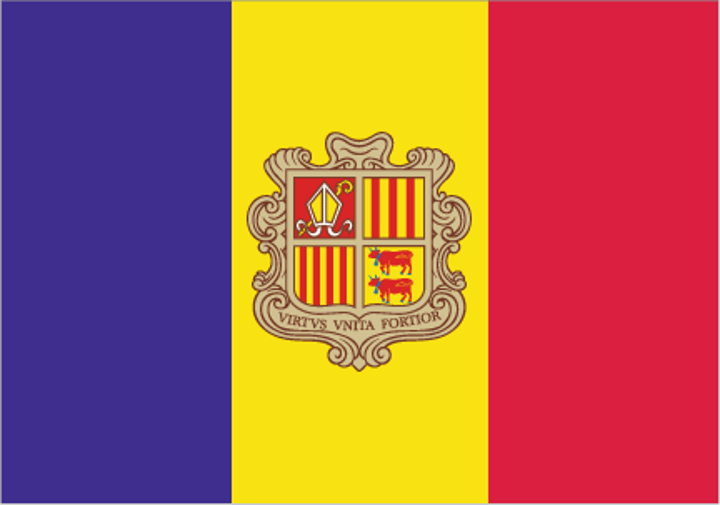
Angola
Red = bloodshed during the colonial period, independence struggle, and in defense of the country.
Black = Africa.
Gear = industrial workers and production.
Machete = peasantry, agricultural production, the armed struggle.
Star shaped like the red star = international solidarity and progress.
Yellow = the country's wealth.
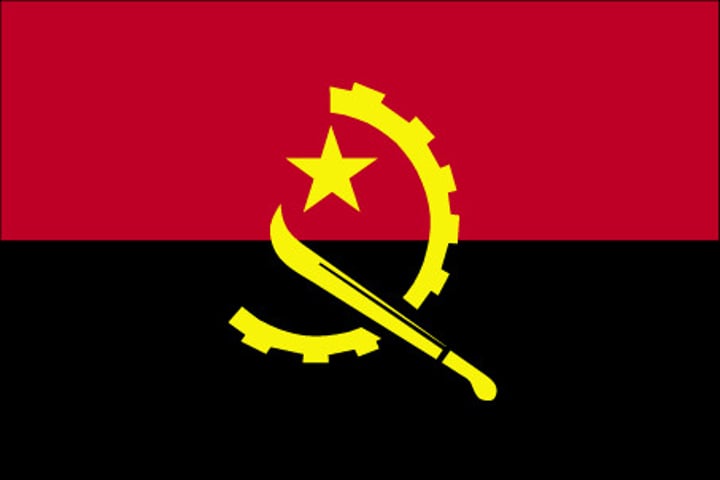
Antigua and Barbuda
Black = African ancestry of the people.
Blue = hope and the Caribbean Sea.
Red = energy or life of the people.
Successive coloring of black, yellow, blue, and white = soil, sun, sea, and sand.
V-shape = symbol of victory.
The seven points on the flag = each of the six parishes and the island of B______.
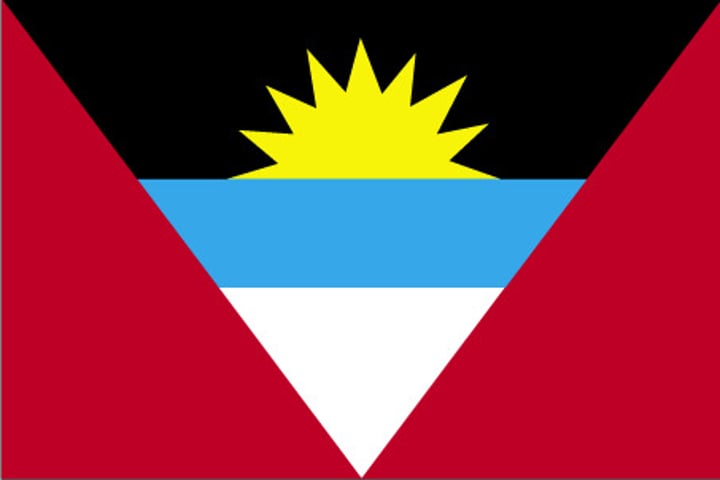
Argentina
Colors: sky, clouds, and sun, or loyalty towards the House of Bourbon.
Sun of May = replica of an engraving on the country’s first coin in 1813.
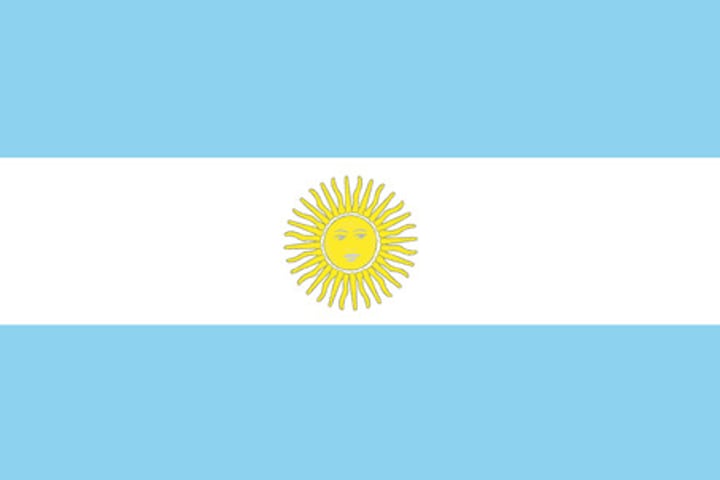
Hayastan (Armenia)
Red = the Highland, the people's continued struggle for survival, maintenance of the Christian faith, independence, and freedom.
Blue = the will of the people to live beneath peaceful skies.
Orange = the creative talent and hard-working nature of the people.
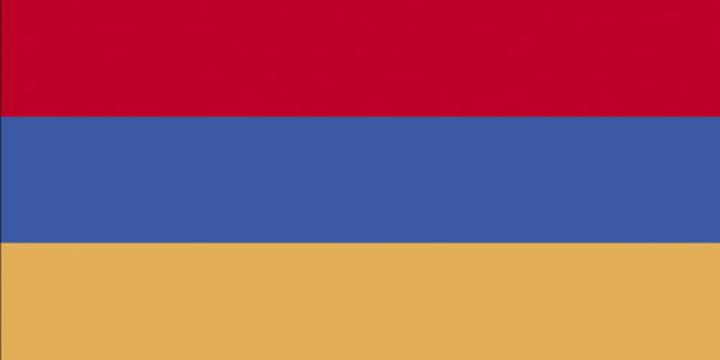
Australia
The Union Flag = the history of British settlement. Historically, it was included in the design as a demonstration of loyalty to the British Empire.
The Commonwealth Star/Federation Star = six points for the six federating colonies + a seventh point for the Territory of Papua and any future territories.
The Southern Cross = one of the most distinctive constellations visible in the Southern Hemisphere.
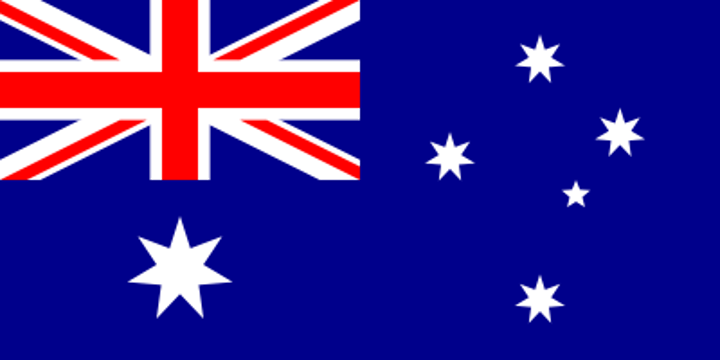
Österreich (Austria)
Originated from the arms of the Babenberg dynasty.
Legend: invented by Duke Leopold V as a consequence of his fighting during the Siege of Acre. After a fierce battle, his white surcoat was completely drenched in blood. When he removed his belt, the cloth beneath remained unstained, revealing the combination of red-white-red.
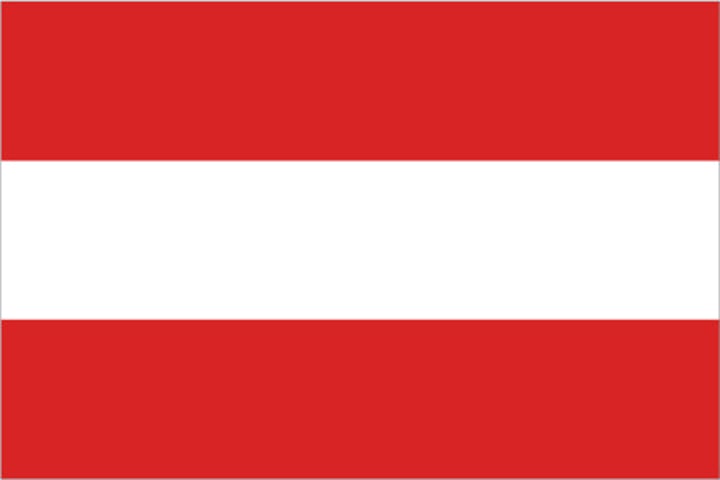
Azərbaycan (Azerbaijan)
Bright blue = Turkic heritage.
Red = the creation of a modern state and the development of democracy.
Green = Islam.
Crescent and star = typically seen as markers of Islam, but some disagree about why the eight-pointed star is on the flag.
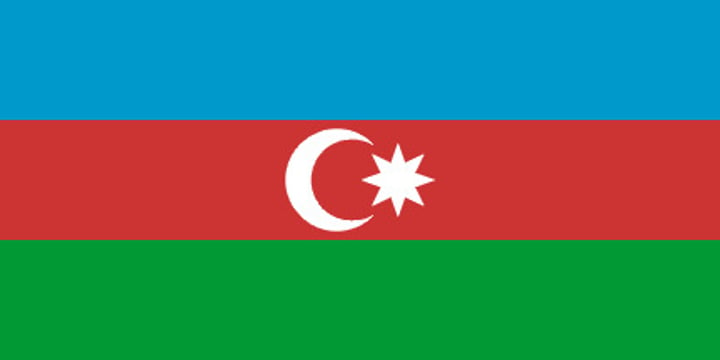
al-Baḥrayn (Bahrain)
Five white triangles = the five pillars of Islam.
Red = the blood of the martyrs and the battles of the country.
White = peace.
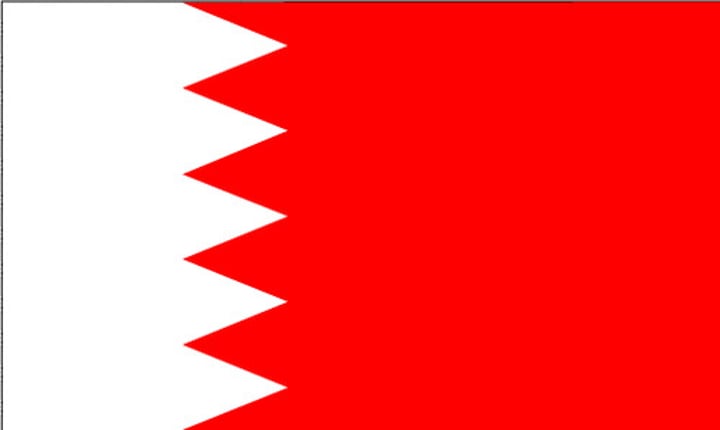
Bānlādēśa (Bangladesh)
Green = the lushness of the green landscape of the country or youth power and progress.
Red disk = the blood shed during the Liberation War and the blood of those who died for the country’s independence or revolution and renaissance.
The circularity of the red design indicates the rising sun, similar to the Japanese flag.
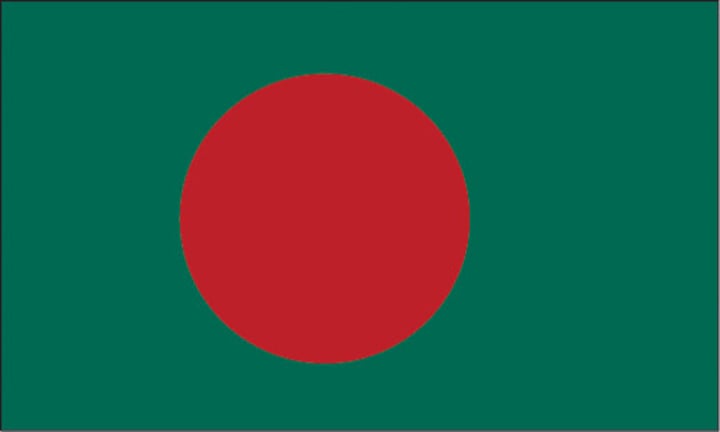
Barbados
Two bands of ultramarine = the ocean surrounding the country and the sky.
Golden middle band = the sand.
A black trident head/the broken trident = taken from the country’s colonial badge, where the trident of Poseidon is shown with Britannia holding it. The broken lower part symbolizes a symbolic break from its status as a colony.
The three points of the trident = the three principles of democracy: government of the people, government for the people, and government by the people.
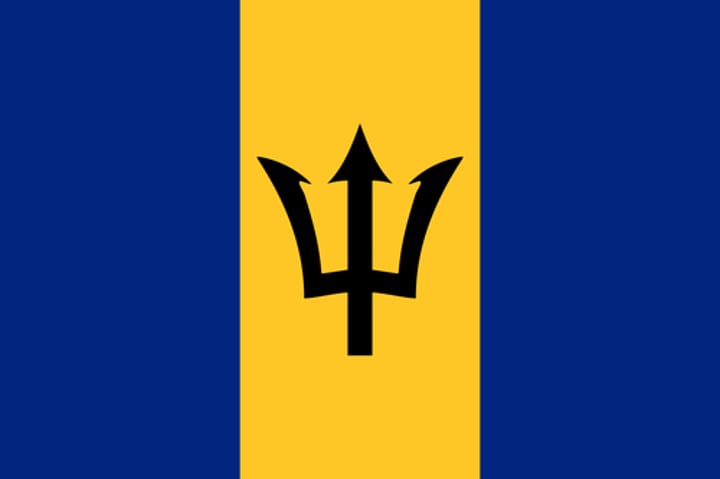
Bielarusi, Belarus
No official interpretation for the colors of the flag.
Red = freedom and the sacrifice of the nation's forefathers.
Green = life.
Red-on-white traditional decorative pattern.
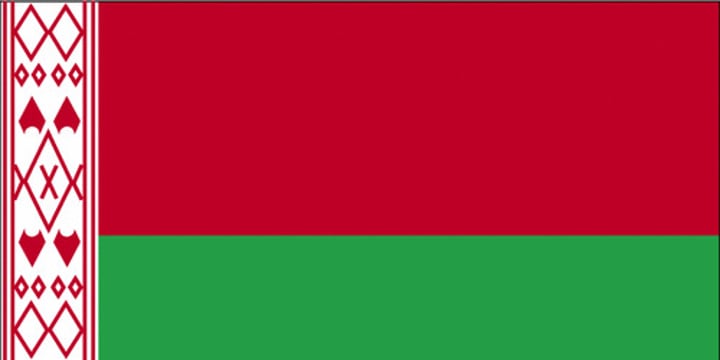
België, Belgique, Belgien (Belgium)
The colors correspond to the red lion of Hainaut, Limburg and Luxembourg, the yellow lion of Brabant, and the black lion of Flanders and Namur.
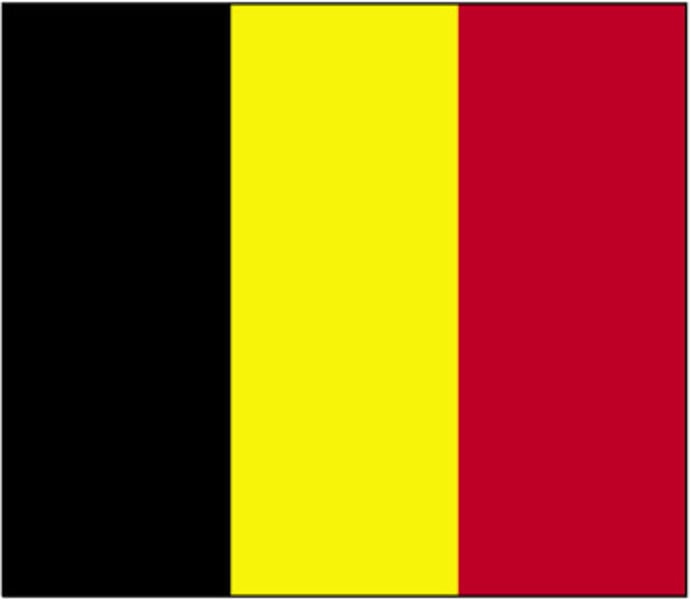
Belize, Belice, Bileez
The colors are respectively those of the country's national parties, the People's United Party (blue), and United Democratic Party (Belize) (red).
The 50 leaves recall 1950, the year PUP came to power.
The coat of arms with the figures (a mestizo and a man of African descent), tools and mahogany trees = the logging industry that first led to British settlement there.
Sub Umbra Floreo = "Under the Shade I Flourish", the national motto.
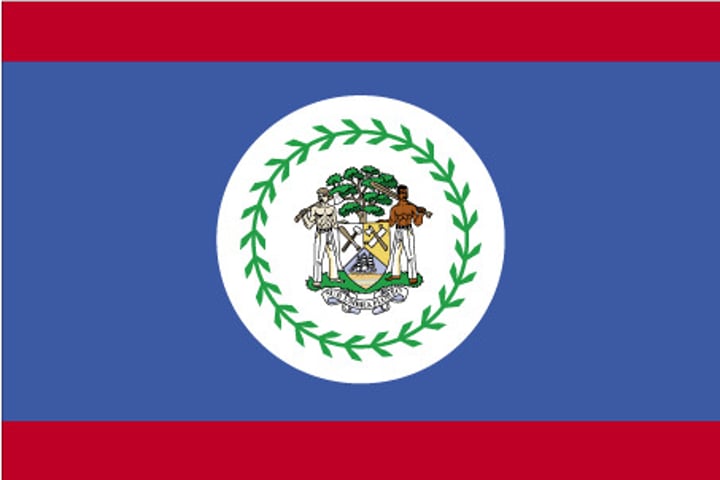
Bénin
Green = the hope of a new democracy.
Red = the courage of the ancestors.
Yellow = the treasures of the nation.
On a continental level, the yellow, green and red represented the Pan-Africanist movement, the African Democratic Rally, and honors Ethiopia, the oldest independent country in Africa.
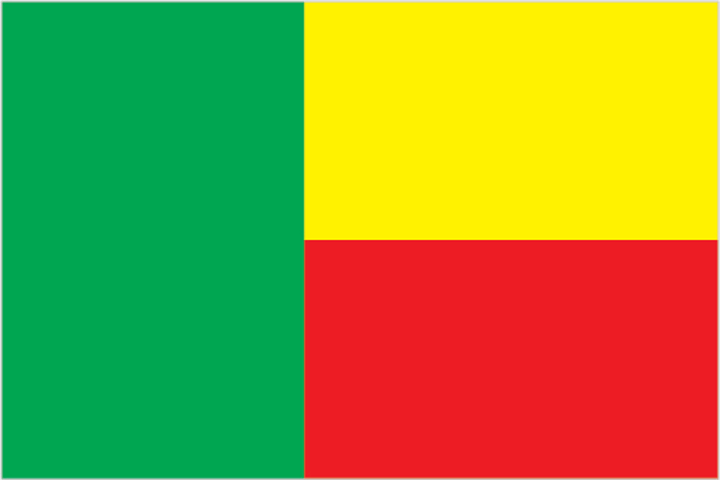
Druk Yul (Bhutan)
Yellow = civil tradition and temporal authority as embodied in the Druk Gyalpo, the Dragon King of the country, whose royal garb traditionally includes a yellow kabney (scarf).
Orange = Buddhist spiritual tradition.
The dragon spreads equally between the colors = the equal importance of both civic and monastic traditions and evoking the strength of the sacred bond between sovereign and people.
Dragon's white color = the purity of inner thoughts and deeds that unite all the ethnically and linguistically diverse peoples of the country.
Jewels held in Druk's claws represent the country’s wealth and the security and protection of its people.
The dragon's snarling mouth = the country’s deities' commitment to its defense.
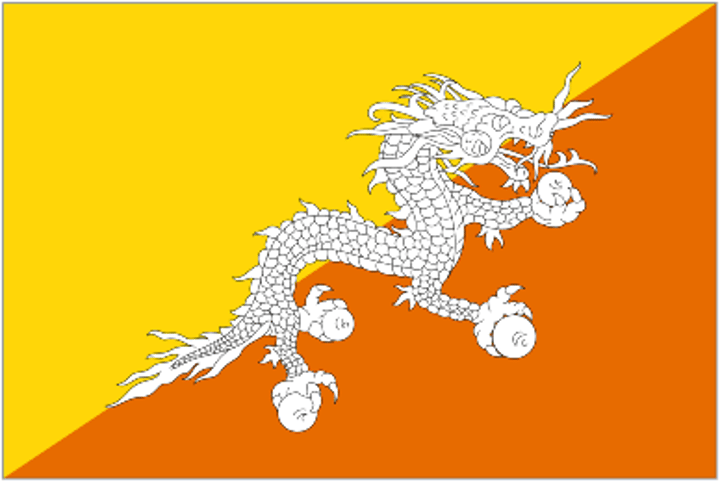
Bolivia, Wuliwya, Puliwya
Red: "the blood shed by our heroes for the birth and preservation of the Republic."
Yellow: "our wealth and resources."
Green: "the richness of our natural areas as well as hope, a foundational value of our society."
Civil flag without coat of arms, state and war flag with coat of arms.
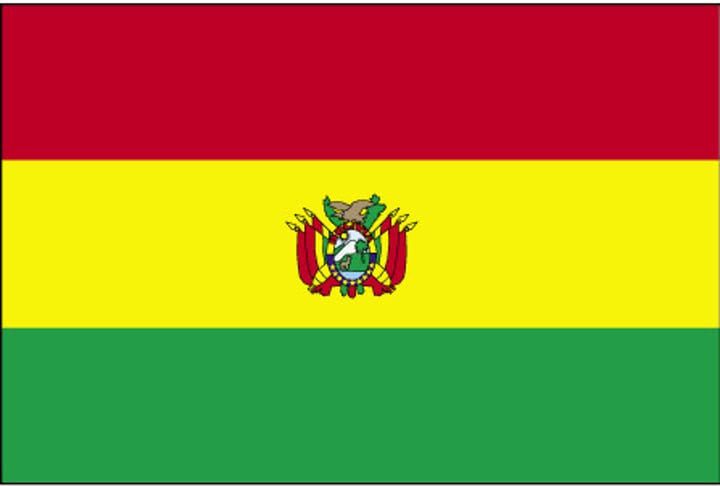
Bosna i Hercegovina (Bosnia and Herzegovina)
Three points of the triangle = the three main ethnic groups (or "constituent peoples"): Bosniaks, Croats, and Serbs.
Triangle = the approximate shape of the territory.
Stars = Europe, meant to be infinite in number.
White, blue, and yellow = neutrality and peace, also traditionally associated with Bosnian culture and history.
Blue background = evocative of the flag of Europe.
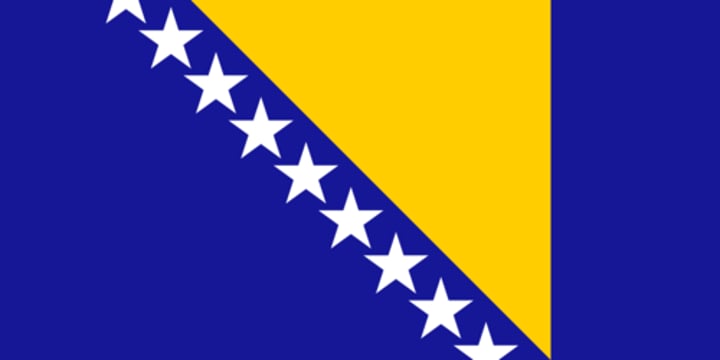
Botswana
Light blue = water and rain, a precious resource for an agriculture-dependent country with frequent droughts. Also alludes to the motto featured on the coat of arms (Pula = "Let there be rain" in Setswana) and life, which is sustained by water.
Black band with white frame = the harmony and cooperation between the people of different races and the racial diversity of the country, the stripes of the zebra, the national animal.

Brasil
Green = the House of Braganza of Pedro I, the first Emperor.
Yellow = the House of Habsburg of Pedro I’s wife, Empress Maria Leopoldina.
Blue circle with stars = the sky over the former capital on 15 November 1889.
Stars = each corresponding to a Federal Unit, sized in proportion relative to its geographic size.
Ordem e Progresso = derived from Auguste Comte's motto of positivism: "L'amour pour principe et l'ordre pour base; le progrès pour but" ("Love as a principle and order as the basis; progress as the goal").

Brunei
Yellow = the sultan, traditionally the color of royalty in Southeast Asia.
Crescent = Islam.
Parasol = monarchy.
Hands = the benevolence of the government.
Black and white stripes = chief ministers (first minister = slightly thicker white stripe, second minister = black stripe).
National motto on the crescent (الدائمون المحسنون بالهدى) = "Always render service with God's guidance."
Name of the country on a banner below the crescent.
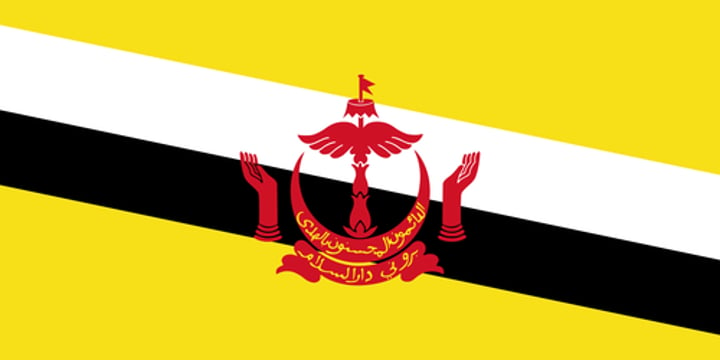
Balgariya (Bulgaria)
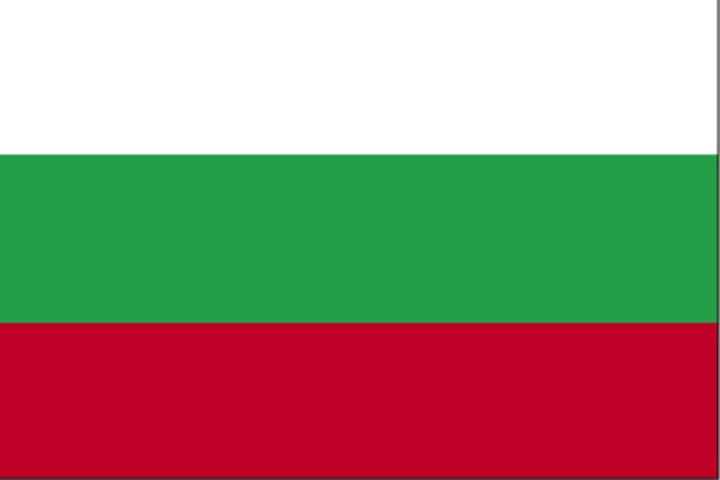
Burkĩna Faso
Pan-African colors = break with the country's colonial past and its unity with other African ex-colonies.
Red = the revolution.
Green = the abundance of agricultural and natural riches.
Yellow star = the guiding light of the revolution.

Burundi
White color = peace.
Green = the nation's hopes placed on future development.
Red = the suffering of the nation during its freedom struggle.
Three stars = the three ethnic groups: the Hutu, the Twa and the Tutsi, the three elements of the national motto: Unité, Travail, Progrès ("Unity, Work and Progress"), and the loyalty that the citizens of the nation have pledged to their God, king, and country.
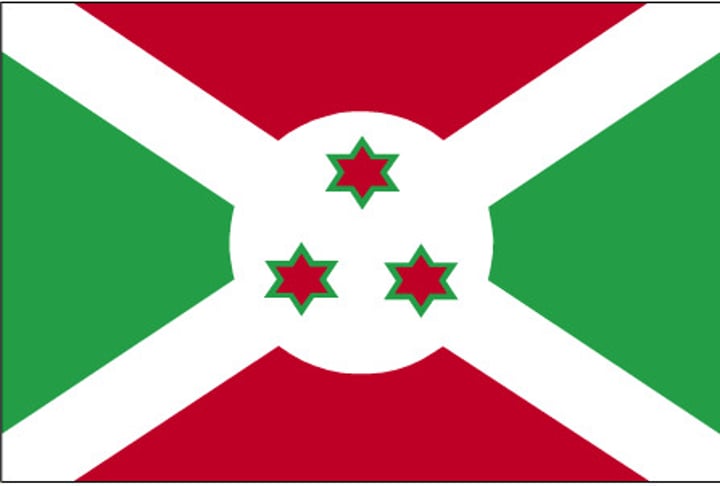
Kâmpŭchéa (Cambodia)
Angkor Wat (Hindu-Buddhist temple complex) = Integrity, Justice, and Heritage; Religion.
Blue = Liberty, Cooperation, and Brotherhood; King.
Red = Bravery; Nation.
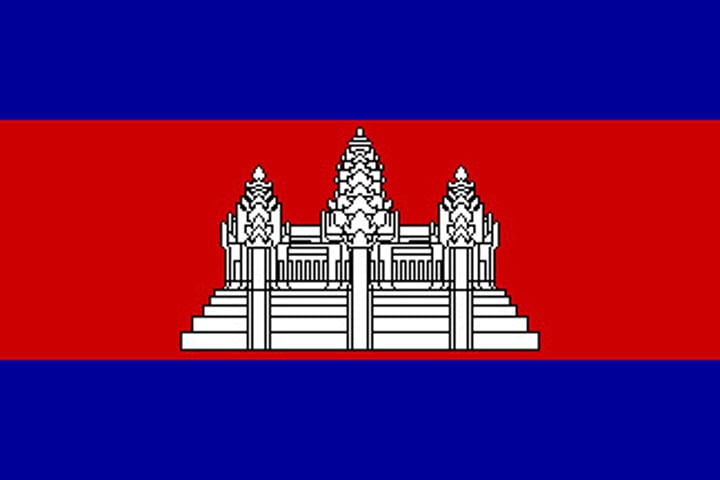
Cameroun, Cameroon
Uses the traditional Pan-African colors.
Red = unity, and the star is referred to as "the star of unity".
Yellow = the sun and the northern savannas.
Green = the southern forests.
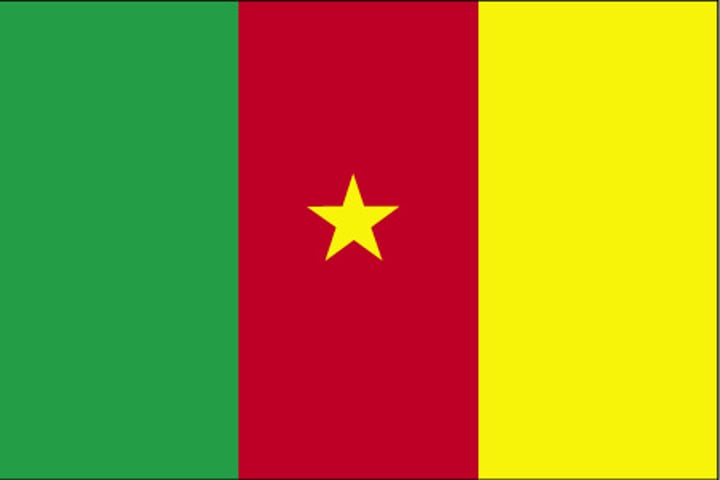
Canada
Maple leaf = used as an emblem for the territory/country since the 18th century.
Red = from Saint George’s Cross.
White = the French royal emblem since King Charles VII.
The number and arrangement of the points of the leaf were chosen after wind tunnel tests showed the current design to be the least blurry of the various designs when tested under high-wind conditions.
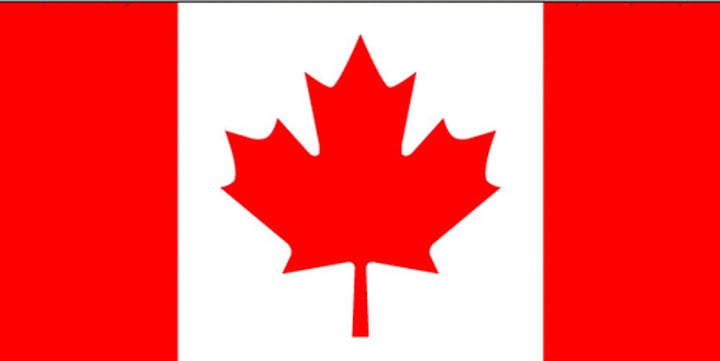
Cabo Verde, Kabu Verdi
10 stars = the main islands of the nation (a chain of islands off the coast of West Africa).
Blue = the ocean and the sky.
Band of white and red = the road toward the construction of the nation, peace (white), and effort (red).
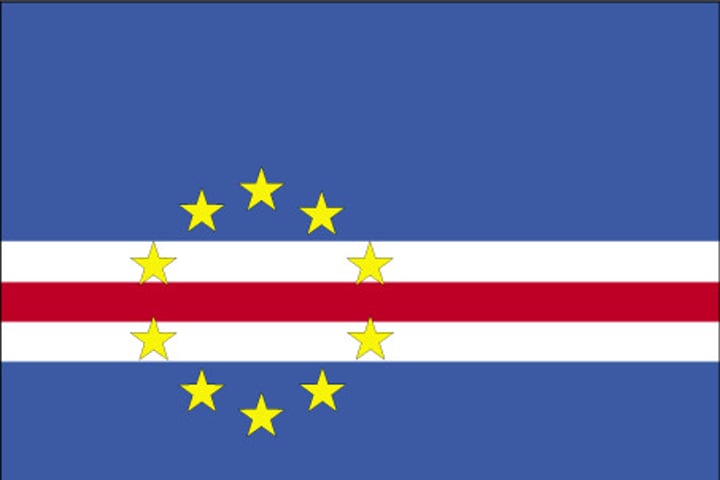
Ködörösêse tî Bêafrîka, République centrafricaine (Central African Republic)
Symbolic of France (blue and white) and Africa (green and yellow) with the red vertical stripe connecting them both in unity, and the respect that Europeans and Africans should have for each other.
Yellow star = independence and African unity, progress, and tolerance.
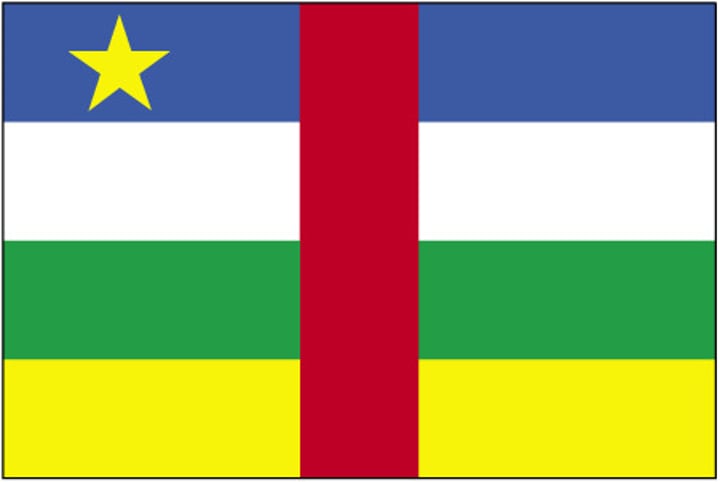
Tishād, Tchad (Chad)
Combination of French colors (blue, white, and red) with the Pan-African colors (green, yellow, and red) as seen on the flag of Ethiopia.
Blue = the sky and hope.
Gold = the sun and desert.
Red = the blood shed over independence.
Almost identical to the flag of Romania.
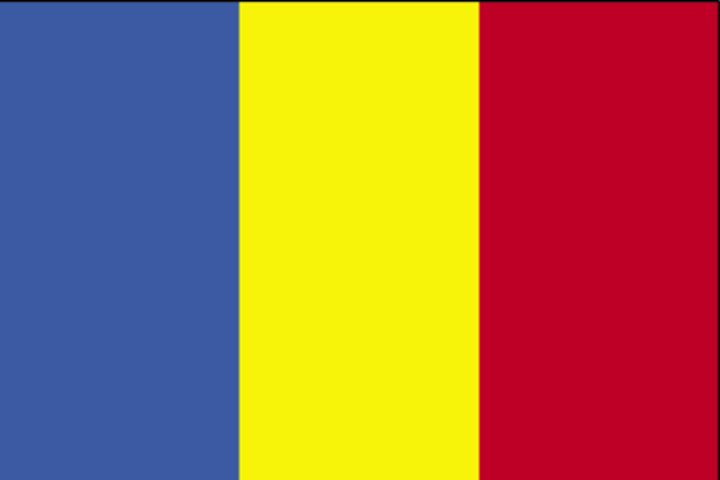
Chile
La Estrella Solitaria (The Lone Star), influenced by the US flag.
Star = Venus, significant to the country's indigenous Mapuches, symbolizing a guide to progress and honor; other interpretations say it refers to an independent state.
Blue = the sky and the Pacific Ocean.
White = the snow-covered Andes.
Red = the blood spilled to achieve independence.
According to the epic poem La Araucana, the colors were derived from those from the flag flown by the Mapuche during the Arauco War.

Zhōngguó (China)
Red = the Communist Revolution.
Five stars = the unity of the people under the leadership of the Communist Party; orientation shows that the unity should revolve around a center.
Larger star = the Communist Party
Four smaller stars = the four social classes of the New Democracy mentioned in Mao's "On the People's Democratic Dictatorship": the working class, the peasantry, the urban petite bourgeoisie, and the national bourgeoisie.
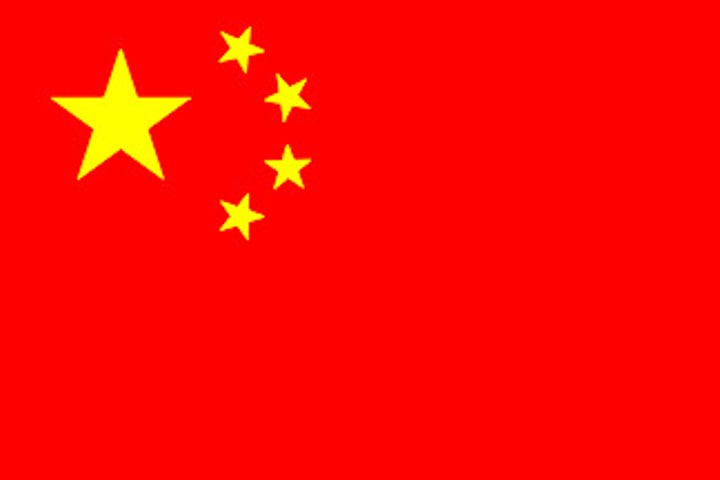
Colombia
Yellow = the riches of the country, the wealth of the soil, the gold, sovereignty, harmony, justice, and agriculture, as well as the Sun, the source of light.
Blue = the sky above, the seas on the shores, the rivers that run through, and loyalty and vigilance.
Red = the blood spilled for independence and the effort of the people, their determination and perseverance. Although the people once struggled, they have since thrived.
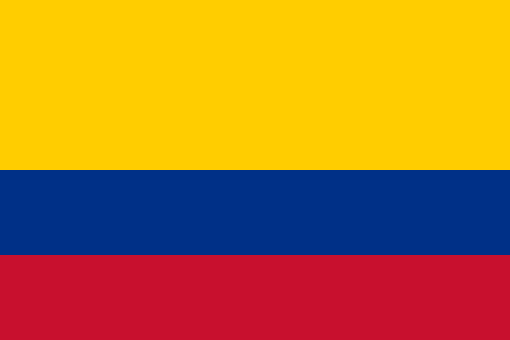
Komori, Juzur al-qamar, Les Comores (The Comoros)
Four stripes = the four main islands of the nation: yellow for Mohéli, white for Mayotte (a French department claimed by the nation), red for Anjouan, and blue for Grande Comore.
Four stars = the four islands.
Star, crescent, and color green = their main religion, Islam.
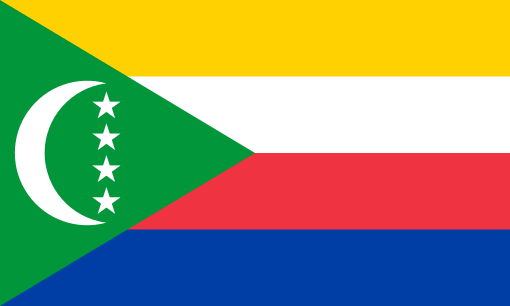
Hrvatska (Croatia)
Combines the colors of the flags of the Kingdom of _______ (red and white), the Kingdom of Slavonia (blue and white), and partially of the Kingdom of Dalmatia (blue and yellow).
Shield = the red and white checkerboard of the country.
Crown consisting of shields of its various regions, the historical arms of _______, Dubrovnik, Dalmatia, Istria, and Slavonia.
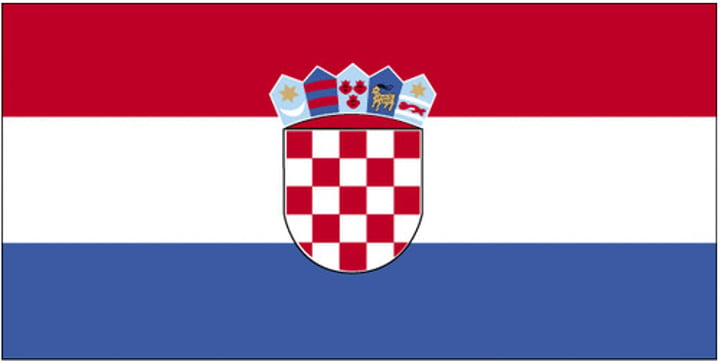
Cuba
Three blue stripes = the three military districts of the country when it was dominated by Spain.
White stripes = the purity of the patriot cause.
Red triangle = strength and constancy, possibly Masonic symbol for equality.
White star = independence.
Adopted by anti-Spanish exiles under the leadership of Narciso López, suggested by the poet Miguel Teurbe Tolón.
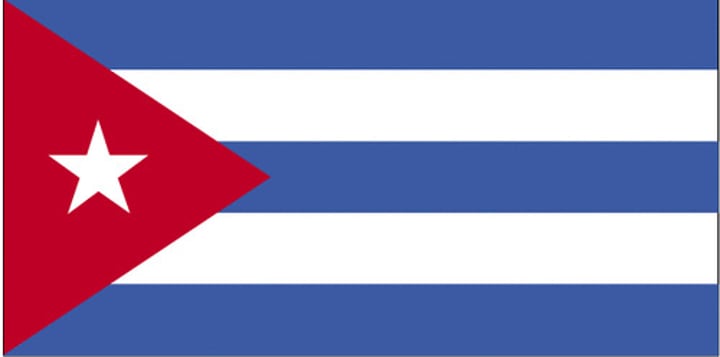
Kýpros, Kıbrıs (Cyprus)
Shape of the entirety of the island in copper-orange color = the large deposits of copper ore on the island.
Two olive branches on white background = peace between the Greek and Turkish people.
Under the constitution, the flag should "have a neutral design and color," i.e. it should not include either blue or red colors (the colors of the flag of Greece and the flag of Turkey), nor portray a cross or a crescent.
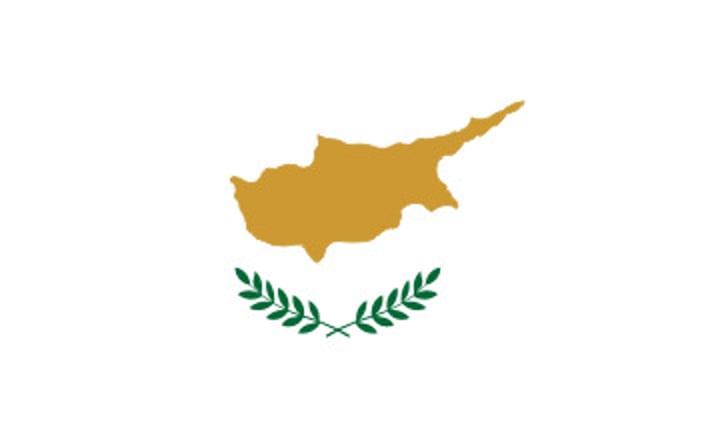
Česká republika (Czech Republic)
Red and white horizontal stripes = derived from the coat of arms of Bohemia.
Blue chevron = influenced by the flag of the Philippines.
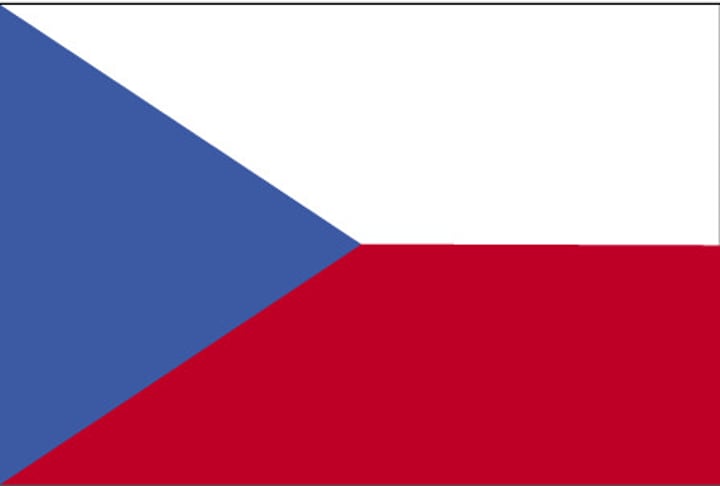
Danmark (Denmark)
Legend of origin: fell from the sky during a battle and miraculously led to a victory.
Elongated Nordic cross = Christianity, reflects its use as a maritime flag in the 18th century.
Oldest continuously used national flag, since 1625.

Jībūtī, Djibouti
Sky blue = sky and the sea, as well as the Somalis.
Green = everlasting green of the earth, as well as the Afars.
Red star = national unity and the blood shed by the martyrs of independence.
White = peace.
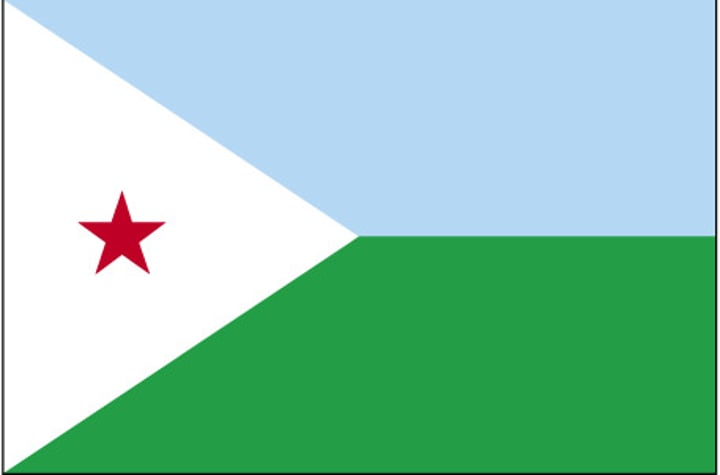
Dominica
Sisserou parrot (Amazona imperialis) = national bird emblem, endemic to the country and an endangered species.
Green field = the lush vegetation of the island.
Cross = the Trinity and Christianity.
Three colors of the cross = the natives, the fertile soil, and the pure water.
10 green five-pointed stars = the country's 10 parishes.
Red disc = justice.
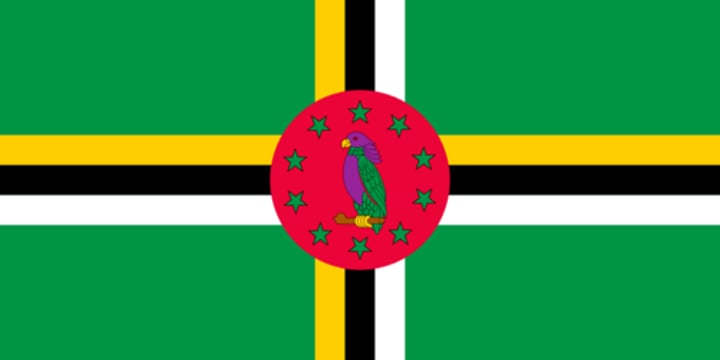
República Dominicana (Dominican Republic)
Blue = liberty.
White = salvation.
Red = the blood of heroes.
Dios, Patria, Libertad = national motto: “God, Homeland, Liberty.”
Bible with a small crucifix = said to be opened to John 8:32: “And the truth shall make you free.”

Ecuador
Francisco de Miranda inspired by a conversation with Goethe and his theory of primary colors: warmth and nobility (yellow), excitement and serenity (blue), and exaltation (red).
Yellow = the crops and the fertile soil.
Blue = the ocean and the clear skies.
Red = the blood spilled by the heroes who died in the name of their countrymen's Fatherland and Freedom.
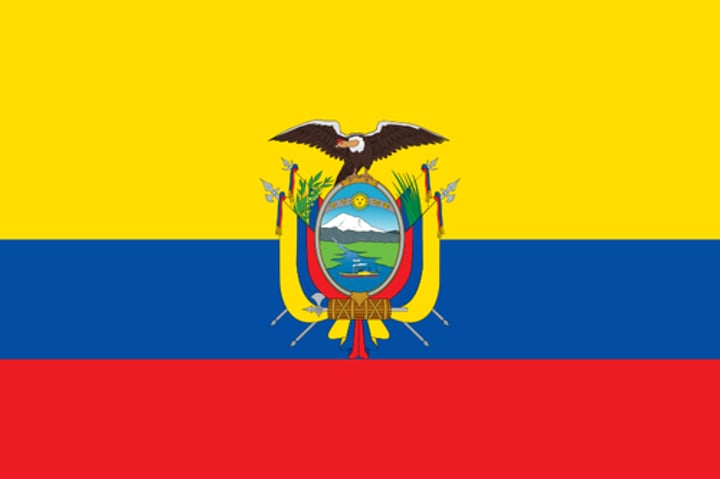
Miṣr, Maṣr (Egypt)
The revolutionary flag + the eagle of Saladin (the national emblem).
Red = blood in the war against colonization.
White = purity of the people’s hearts.
Black below white = the manner in which darkness is overcome.
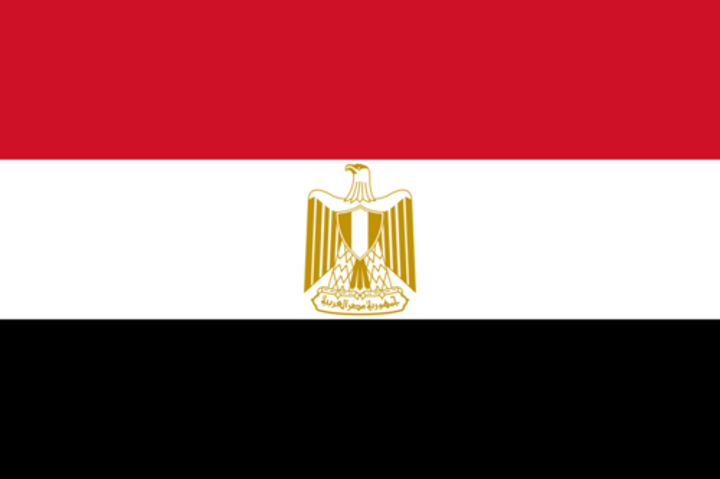
El Salvador
Cobalt blue: = the sky of the country and two oceans of Central America.
White = peace, concordia, and solidarity with the world.
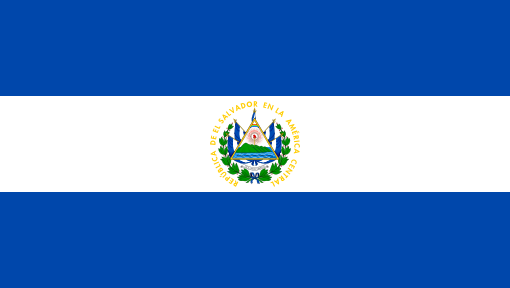
Guinea Ecuatorial, Guinée équatoriale (Equatorial Guinea)
Green = the natural resources, agriculture and jungles of the country.
Blue = the sea, which connects the mainland with the islands.
White = peace.
Red = the bloodshed by the fighters for independence.
Six stars = mainland + five islands.
Unidad, Paz, Justicia = national motto: "Unity, Peace, Justice."
A silk-cotton tree, or Ceiba = it is considered that under a silk-cotton tree a treaty was signed between Spain and a local ruler that marked the beginning of the colonial rule.
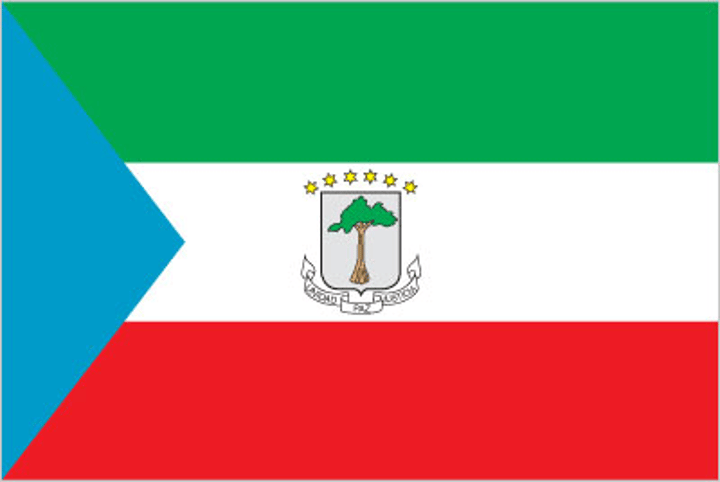
Ertra, 'iiritaria, Eritrea
Colors and layout of People's Liberation Front + wreath and upright olive-branch from the 1950s flag.
Green = agriculture and livestock.
Blue = the bounty of the sea.
Red = the bloodshed in the struggle for independence.
30 leaves in the wreath = the thirty years spent in the independence struggle.
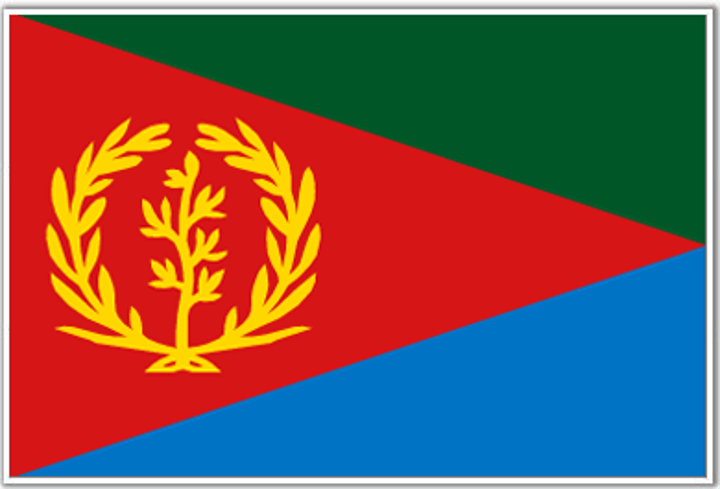
Eesti (Estonia)
Colloquially called the sinimustvalge (lit. 'blue-black-white').
Blue = the vaulted blue sky above the native land.
Black = attachment to the soil of the homeland as well as the fate of the people — for centuries black with worries.
White = purity, hard work, and commitment.
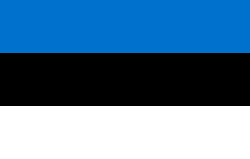
eSwatini, Eswatini
Red = past battles.
Blue = peace and stability.
Yellow = the resources of the country.
Black and white Nguni shield and two spears = protection from the country's enemies; color is meant to show that white and black people live in peaceful coexistence in the country.
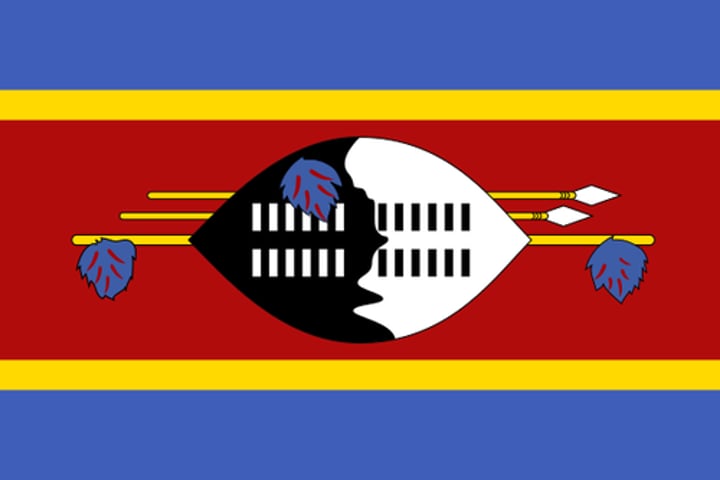
ʾĪtyōṗṗyā, Itiyoophiyaa (Ethiopia)
Green = labor, development, and fertility.
Yellow = hope.
Red = the blood in defense of the country.
Blue = peace.
Star = the country’s bright future.
Equidistant yellow rays = the equality of all citizens regardless of race, creed, or sex.
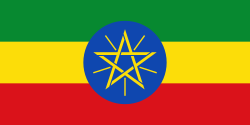
Viti, Fijī, Fiji
Bright blue background = the Pacific Ocean, important for the fishing industry and tourism.
The Union Jack = the country's links with the United Kingdom.
Shield = from the country's coat of arms.
Images on the shield = agricultural activities (sugar cane, a coconut palm, a dove of peace, and a bunch of bananas) and the historical associations with the United Kingdom (a British lion holding a cocoa pod).
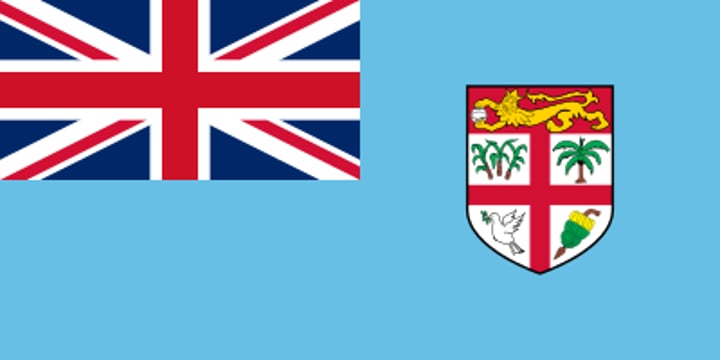
Suomi, Finland
Also called siniristilippu ("Blue Cross Flag").
Based on the Nordic cross.
Blue = the country's thousands of lakes and the sky.
White = the snow that covers the land in winter.

France
Blue: Saint Martin and maybe the bourgeoisie, coming first.
White: the "ancient French colour," and maybe the clergy (superior over the nobility and the bourgeoisie).
Red: Saint Denis and maybe the nobility, coming last.
Blue and red: the Virgin Mary, the patroness of France, and the colors of the oriflamme.
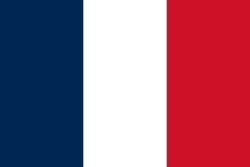
République Gabonaise (Gabonese Republic) (after the Portuguese word gabão = a coat with sleeve and hood resembling the shape of the Komo River estuary)
Yellow = the Equator – which cuts across the country – and the sun.
Green = the natural resources and "extensive forested area" important for lumber.
Blue = the South Atlantic Ocean along which the country has an "extensive coast."
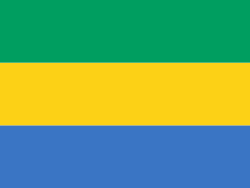
Sakartvelo (Georgia) (“land of Kartvelians”)
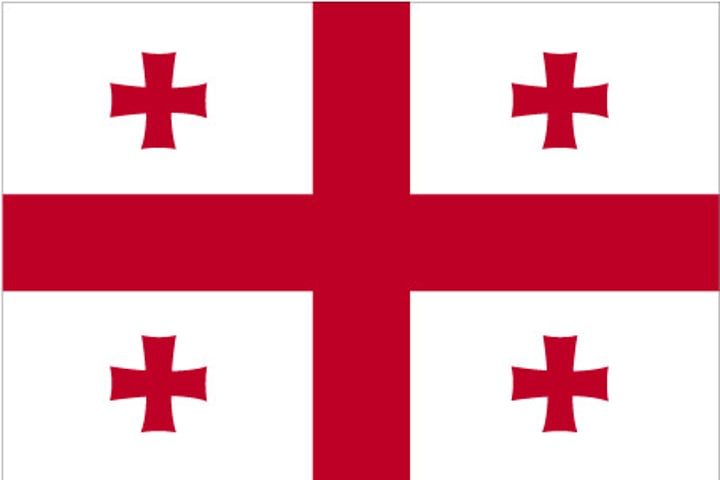
Bundesrepublik Deutschland (Federal Republic of Germany) (“country of the people”)
Black-red-gold flag was used to symbolize the movement against the Conservative Order in the 1840s. Especially after their reintroduction during the Weimar period, they became synonymous with liberalism in general.
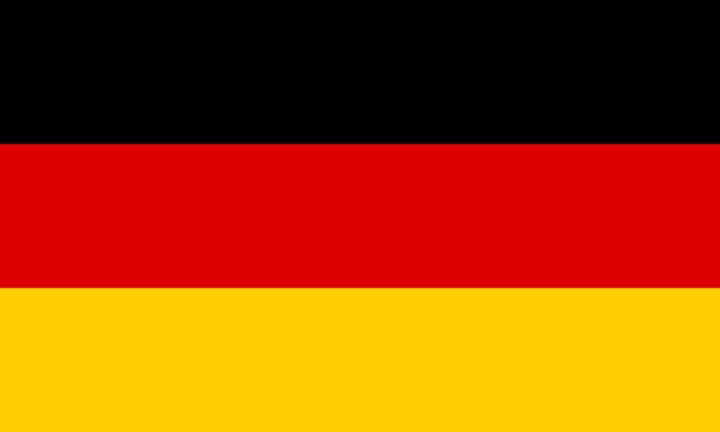
Republic of Ghana (“Warrior King,” title of the emperor, which no longer exists)
The Ethiopian Pan-African colors of red, yellow, and green.
Red = the blood of forefathers who led the struggle of independence from British colonial rule and love of the nation.
Gold = the wealth imbued by mineral resources.
Green = forests and natural wealth.
Black Star of Africa = the emancipation of Africa and unity against colonialism.
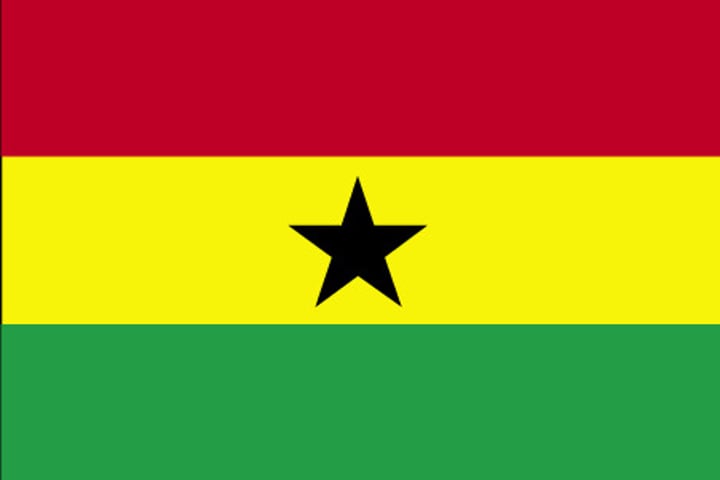
Ellinikí Dimokratía (Hellenic Republic) (from the mythological figure Hellen, founding father to all Greek tribes)
White cross = Eastern Orthodox Christianity.
White and blue = sky and sea.
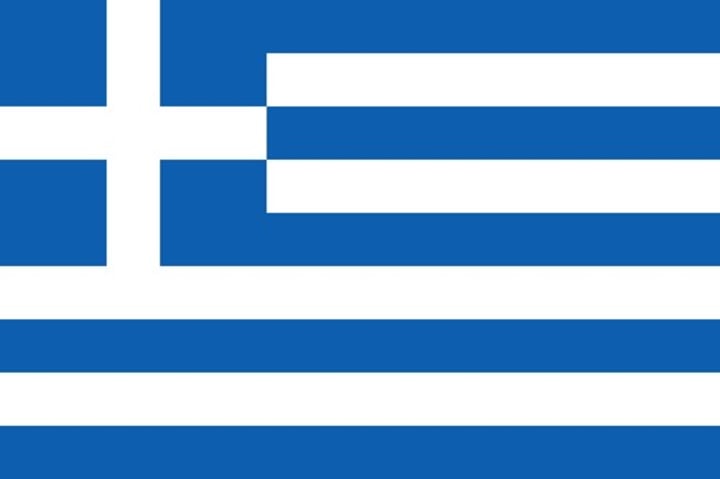
Kalaallit Nunaat (Greenland, autonomous territory of the Kingdom of Denmark) (“land of the Kalaallit”, the Greenlandic Inuit who inhabit the territory's western region)
Colors = same as those of the flag of Denmark, symbolizing its place in the Danish realm.
Similar to the cultural Sámi flag.
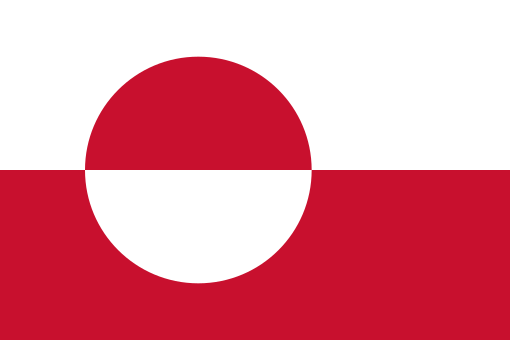
Grenada, Gwenad (likely after the Andalusian city of Granada)
Green = the islands' vegetation and agriculture.
Yellow = the sun and the warmth and wisdom of the people.
Red = harmony, unity, courage, and vitality.
Yellow stars on the red border = the country's parishes.
Yellow star on the red disc = its two sister islands, Carriacou and Petite Martinique which are counted as the country’s seventh parish.
Symbol of a nutmeg = one of the primary agricultural exports of the islands.
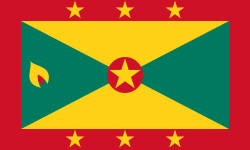
República de Guatemala (Republic of Guatemala) (from the Nahuatl word Cuauhtēmallān = "place of many trees")
Blue stripes = the country is located between two oceans, the Pacific Ocean and the Atlantic Ocean (Caribbean Sea); and the sky over the country.
White = peace and purity.
Resplendent quetzal = the national bird, symbolizes liberty.
Parchment scroll bearing the date of Central America's independence from Spain, 15 September 1821.
Crossed Remington rifles = willingness to defend itself by force if need be.
Bay laurel crown = victory.
Crossed swords =honor.
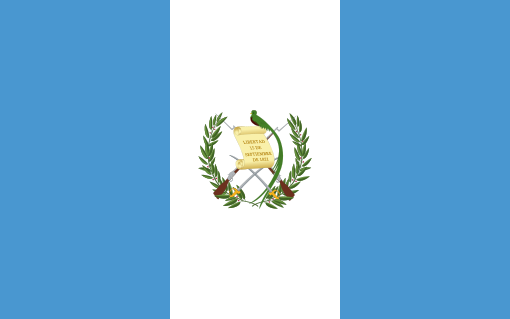
República da Guiné-Bissau (Republic of Guinea-Bissau) (after independence, the name of its capital (Bissau) was added to the country's name to prevent confusion with Guinea)
The traditional Pan-African colors of gold, green, red, and also the Black Star of Africa, heavily influenced by the flag of Ghana.
Black star = the unity of Africa.
Red = the blood shed during the struggle for independence.
Yellow = the sun.
Green = hope.
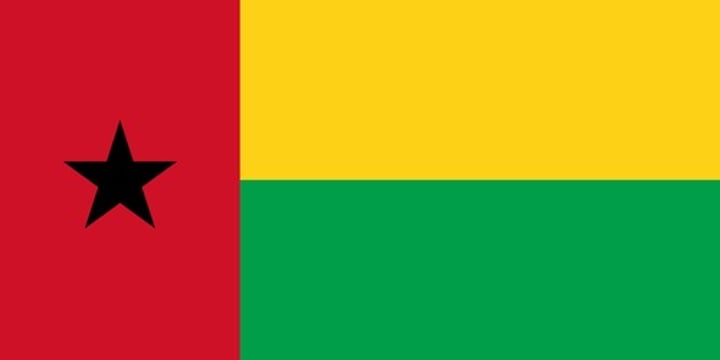
République de Guinée, hawtaandi Gine (Republic of Guinea) (from the Portuguese word Guiné, the lands inhabited by the Guineus, a generic term for the black African peoples south of the Senegal River, in contrast to the "tawny" Zenaga Berbers/Azengues/Moors)
Pan-African movement’s colors.
Red = the blood of anti-colonialist martyrs, the labor of the working classes, and the wish for progress.
Yellow = gold, as well as the sun, which is "the source of energy, generosity and equality for all men to which he gives light equally."
Green = the country's vegetation, continued prosperity arising from its natural resources, and the historically difficult life of the masses who live in the countryside.
Three colors = the three components of the national motto: Travail, Justice, Solidarité ("Work, Justice, Solidarity").
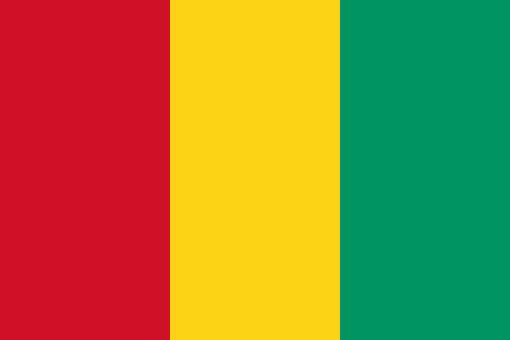
The Co-operative Republic of Guyana ("land of many waters")
Red = zeal and dynamism.
Gold = mineral wealth.
Green = agriculture and forests.
Black = endurance.
White = rivers and water.
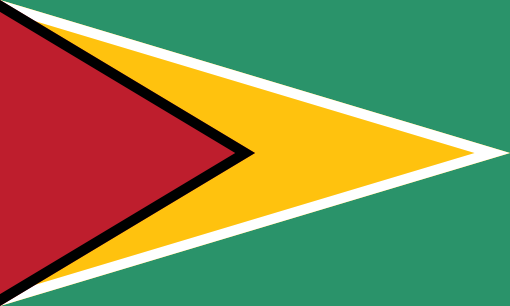
République d'Haïti, Repiblik d Ayiti (Republic of Haiti) ("land of high mountains", from Taíno language)
Lore: revolutionary leader Jean-Jacques Dessalines created the flag by taking a French tricolor and ripping out the white center.
Blue = the Black African citizens.
Red = the gens de couleur (free people of color).
Trophy of weapons atop a green hill and a royal palm topped by the Cap of Liberty = independence.
Motto = L'Union fait la Force ("Unity makes strength").
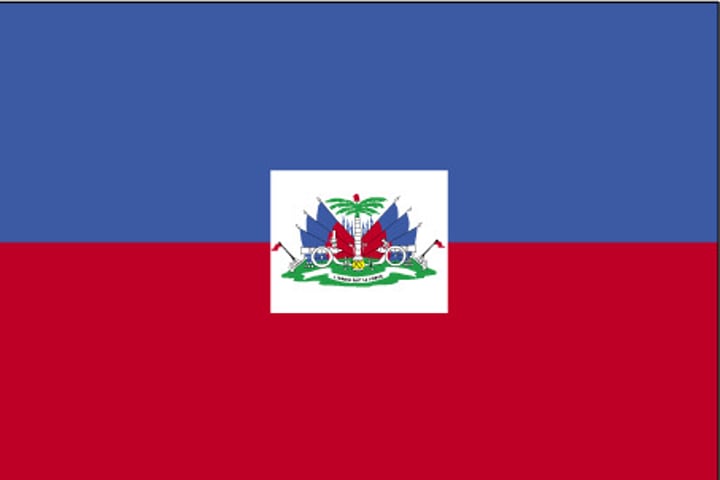
República de Honduras (Republic of Honduras) (“depths”, referring to the bay of Trujillo (fondura) or to Columbus's alleged quote that "Gracias a Dios que hemos salido de esas honduras" ("Thank God we have departed from those depths"))
Blue bands = the Pacific Ocean and the Caribbean Sea, and also the blue sky and brotherhood.
White band = the land between the ocean and the sea, the peace and prosperity of its people, and purity of thoughts.
Five stars = the five nations of the former Federal Republic of Central America and the hope that the nations may form a union again.

Magyarország (Hungary) (“Land of Magyars”, one of the seven major semi-nomadic Hungarian tribes)
Emerged as a sign of national sovereignty during the 1848–1849 revolution against the Habsburgs. The same as the republican movement flag of the United Kingdom (used since 1816).
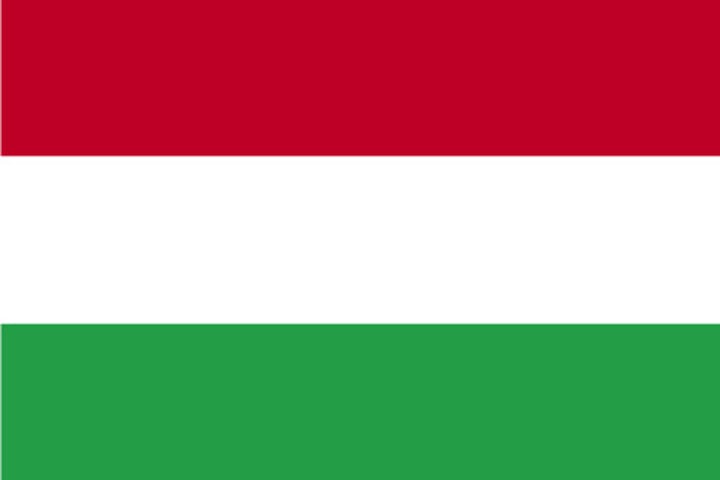
Ísland (Iceland) (a Viking named Flóki Vilgerðarson climbed a mountain and saw a fjord (Arnarfjörður) full of icebergs)
Cross = Christianity.
Red = the fire produced by the island's volcanoes.
White = the ice and snow.
Blue = the mountains of the island.
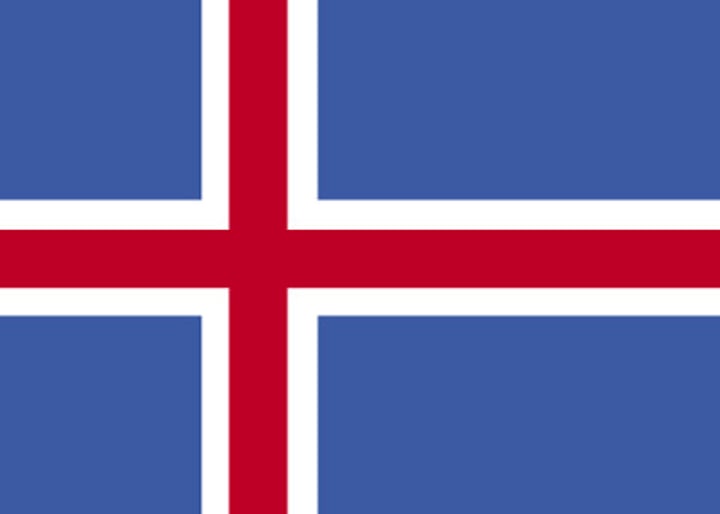
Bhārat Gaṇarājya, Republic of India (from the name of an early Vedic tribe, the Bharatas)
Bhagwa or the Saffron = renunciation or disinterestedness; the leaders must be indifferent to material gains and dedicate themselves to their work.
White = light, the path of truth to guide conduct.
Green = relation to (the) soil, relation to the plant life here, on which all other life depends.
The "Ashoka Chakra" = the wheel of the law of dharma. Truth or satya, dharma or virtue ought to be the controlling principle of those who work under this flag.
Wheel = motion. There is death in stagnation. There is life in movement. The country should no more resist change, it must move and go forward. The wheel represents the dynamism of a peaceful change.
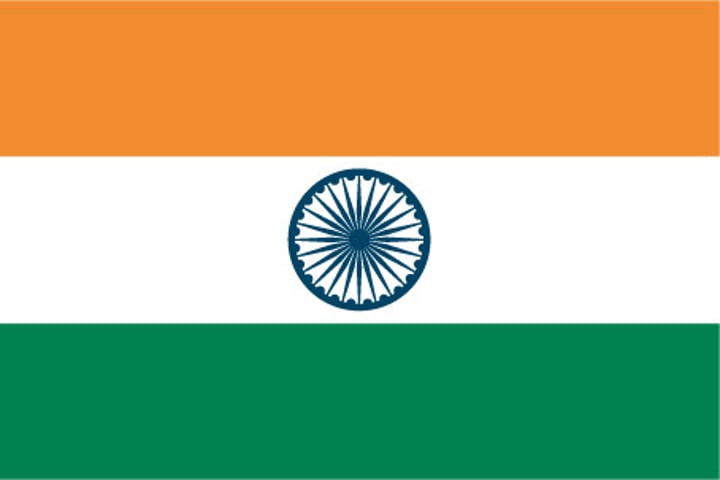
Republik Indonesia (Republic of Indonesia) ("Indian islands")
Red = courage or the human body/physical life.
White = purity or the soul/spiritual life.
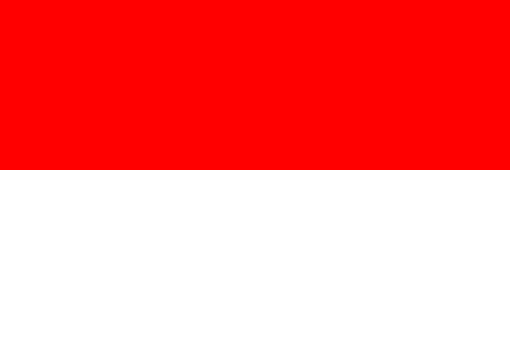
Jomhuri-ye Eslâmi-ye Irân (Islamic Republic of Iran) ("the land of the Aryans/Iranians", *ar-yo- = "one who assembles (skillfully)", which according to Iranian mythology, comes from Iraj, a legendary king)
National emblem ("Allah") in red.
Takbir (magnification [of God], “Allāhu ʾakbar”) written 11 times each in the Kufic script in white.
Green = the Unity and victory of Darius I.
White = peace.
Red = the fallen soldiers.
![<p>National emblem ("Allah") in red.</p><p>Takbir (magnification [of God], “Allāhu ʾakbar”) written 11 times each in the Kufic script in white.</p><p>Green = the Unity and victory of Darius I.</p><p>White = peace.</p><p>Red = the fallen soldiers.</p>](https://knowt-user-attachments.s3.amazonaws.com/31b3a232-72d3-4d82-a504-8bd8bef8078f.jpg)
Jumhūriyyat al-ʿIrāq (Republic of Iraq) (possibly "lowlands" or "deeply rooted, well-watered; fertile")
Takbir (magnification [of God], “Allāhu ʾakbar”) written in green in the Kufic script
Black, white, green, red = pan-Arab colors
Inspired by the poetic verse of Safi al-Din al-Hilli: "Our actions are bright, our battlefields are dark, our lands are green, and our swords are red with the blood of our enemies".
![<p>Takbir (magnification [of God], “Allāhu ʾakbar”) written in green in the Kufic script</p><p>Black, white, green, red = pan-Arab colors</p><p>Inspired by the poetic verse of Safi al-Din al-Hilli: "Our actions are bright, our battlefields are dark, our lands are green, and our swords are red with the blood of our enemies".</p>](https://knowt-user-attachments.s3.amazonaws.com/fe85bdaf-8e90-40c5-9bdf-0e02ebdaaea1.jpg)
Poblacht na hÉireann, Republic of Ireland (from Ériu, the matron goddess of Ireland)
Presented as a gift in 1848 to Thomas Francis Meagher from a small group of French women sympathetic to the country’s sovereignty.
Green = Roman Catholics
Orange = Protestants
White = “a lasting truce between Orange and Green”

Northern Ireland (part of the UK in the north-east of the island of Ireland)
The Ulster Banner has had no official status since 1973.
Based on the flag of the traditional province of Ulster with a Red Hand of Ulster and the red de Burgh cross.
Crown = the monarchy of the United Kingdom.
Six-pointed star = the six counties.
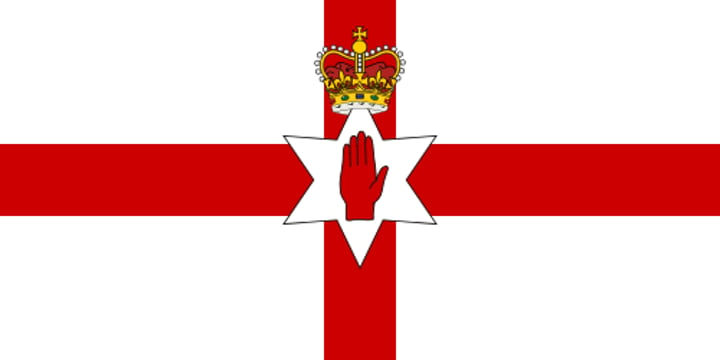
mְdִynat yִshְׂraaֵl (State of Israel) (“El (God) persists/rules”/”struggle with God”, referring to Jacob who successfully wrestled with the angel of the Lord)
Blue stripes = symbolize the stripes on a tallit, the traditional Jewish prayer shawl; God's glory, purity and gevurah (God's severity).
The Star of David = the Jewish people and of Judaism.
White = Chesed (Divine Benevolence).
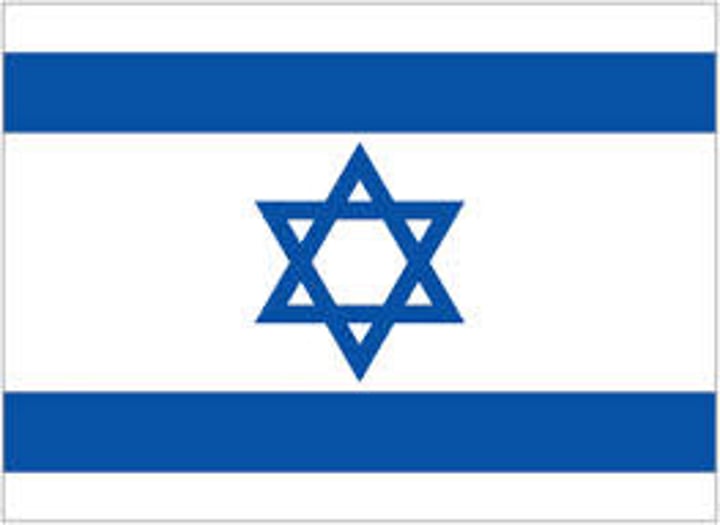
Repubblica Italiana (Italian Republic)
Derives from the flag of France.
Green = natural rights: social equality and freedom; hope.
White = faith.
Red = charity/love.
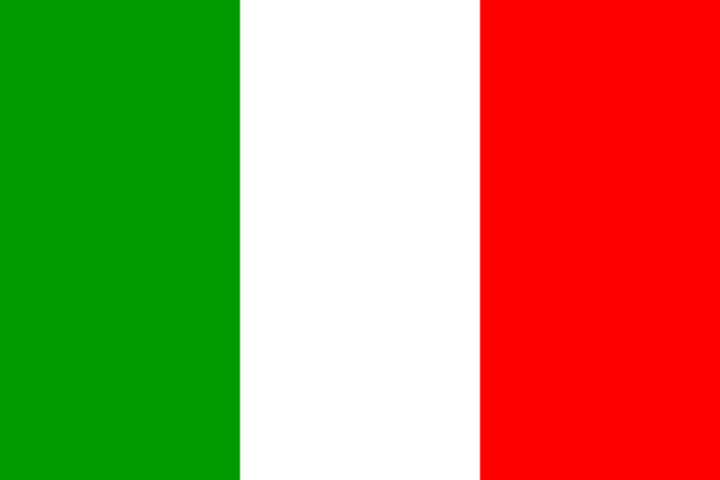
République de Côte d'Ivoire (Republic of Côte d'Ivoire) ("Coast of Ivory", referencing the ivory trade)
Orange: the savannas in the north and the fertility of the land.
White: peace.
Green: “hope, of course, for others; but for us, the certainty of a better future.”
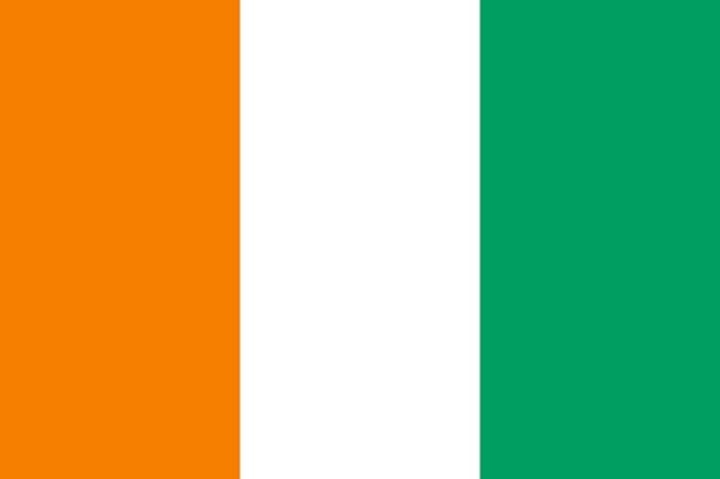
Jamaica, Jumieka (from the Taíno name for the island, Xaymaca = "Land of Wood and Water" or "Land of Springs")
"Hardships there are but the land is green and the sun shineth."
Black = the strength and creativity of the people which has allowed them to overcome difficulties.
Gold = the wealth of the country and the golden sunshine.
Green = the lush vegetation of the island, as well as hope.
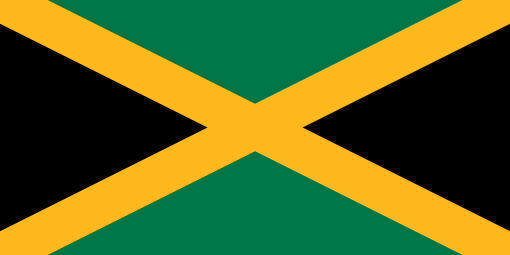
Nippon-koku, Nihon-koku (Japan) ("sun origin")
Nisshōki (日章旗, 'flag of the sun') or Hinomaru (日の丸, 'Ball of the sun').
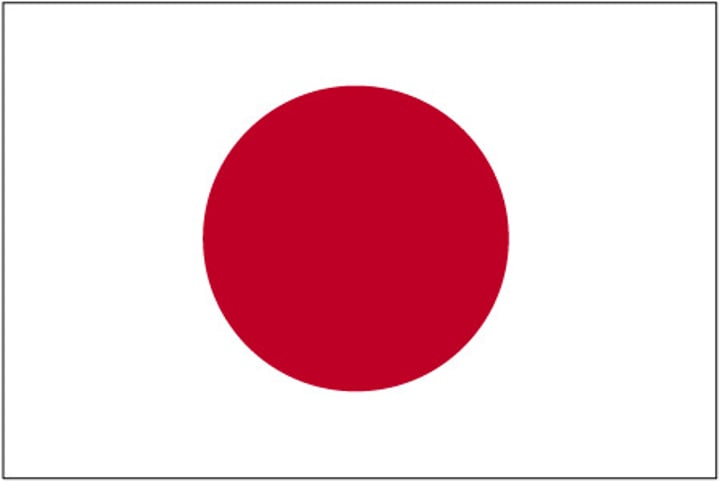
Al-Mamlaka al-Urduniyya al-Hāshimiyya (Hashemite Kingdom of Jordan) (from the Jordan River, which forms much of the country's northwestern border)
Colors = the Pan-Arab colors.
Red = the Hashemite dynasty, and the Arab Revolt/bloody struggle for freedom.
White = the Umayyad Caliphate, bright and peaceful future.
Green = the Fatimid Caliphate or Rashidun Caliphate.
Black = the Abbasid Caliphate.
Seven-pointed star = the unity of the Arab people; the seven verses of Al-Fatiha and the seven hills Amman (the capital) was built on.
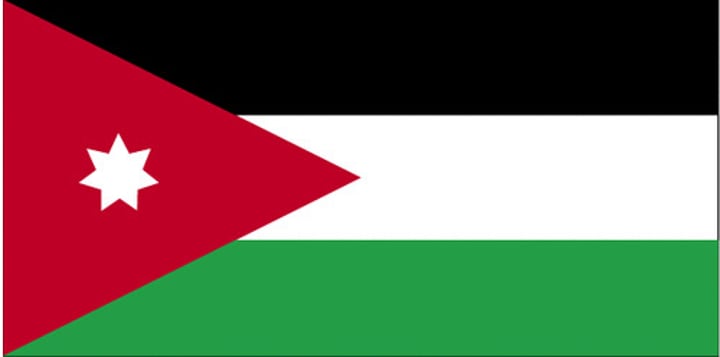
Qazaqstan Respublikasy, Respublika Kazakhstan (Republic of Kazakhstan) (possibly from the Turkic word qaz-, 'to wander', reflecting the Kazakhs' nomadic culture)
Gold and Blue (Munsell) = from the former Soviet flag.
Pattern = the art and cultural traditions of the people.
Sun = source of life and energy, wealth and abundance.
Sun's rays = the steppe's grain which is the basis of abundance and prosperity.
Golden eagle = the power of the state; independence, freedom and flight to the future.
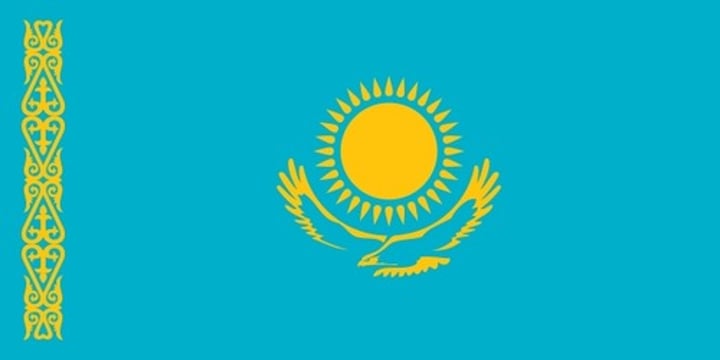
Jamhuri ya Kenya, Republic of Kenya (after Mount Kenya)
Black = the country's African heritage.
Red = the bloodshed during the fight for independence from the British colonialism.
Green = the country's landscape and natural wealth.
White = peace, honesty, purity, and innocence.
Traditional African shield and two spears = the defense of all the things mentioned above.

Republika e Kosovës (Republic of Kosovo) (“Blackbird Field”, a karst field in the eastern half of the country)
Map of the country.
Six stars = the six major ethnic groups: Albanians, Serbs, Bosniaks, Turks, Romani (often grouped with the Ashkali and Egyptians), and Gorani.

Dawlat al-Kuwayt (State of Kuwait) (from كوت Kut or Kout = "fortress built near water")
Colors = the Pan-Arab colors.
Red = the Hashemite dynasty, symbolizes the blood on the swords of Muslim warriors.
White = the Umayyad dynasty, symbolizes purity and noble deeds.
Green = the Fatimid dynasty or Rashidun Caliphate, represents the fertile land of Arabia.
Black = the Abbasid dynasty, represents the defeat of enemies in battle.
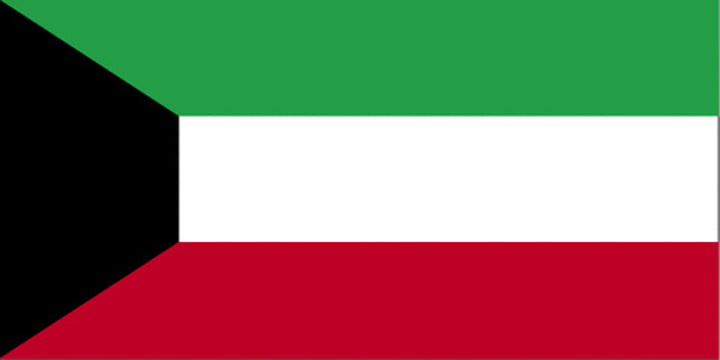
Kırğız Respublikası, Kyrgyzskaya Respublika (Kyrgyz Republic) ("We are forty", believed to refer to the forty clans united by Manas, a legendary hero)
Red = bravery and valor, alludes to the purported emblem hoisted by Manas, the national hero.
Sun = peace and prosperity.
40 rays = the number of tribes united by Manas to fight against the Mongols, as well as the number of followers he had.
Centre of the sun with the roof (tunduk) atop a traditional tent (yurt) when viewed from the interior = the "origin of life", the "unity of time and space", and the people's "hearth and home" and their history.
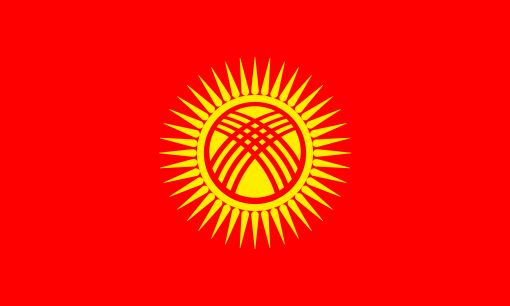
Sathalanalat Paxathipatai Paxaxon Lao (Lao People's Democratic Republic) (after the most common ethnic group, the Lao people)
White disk = the unity of the people (and the future reunification with Northeastern Thailand, separated by the Mekong River) under one nation; a full moon against the Mekong River.
Red = the blood shed by the people on both banks of the Mekong River in their struggle for freedom and independence from the French.
Blue = the Mekong River itself, a symbol of the nation's prosperity.
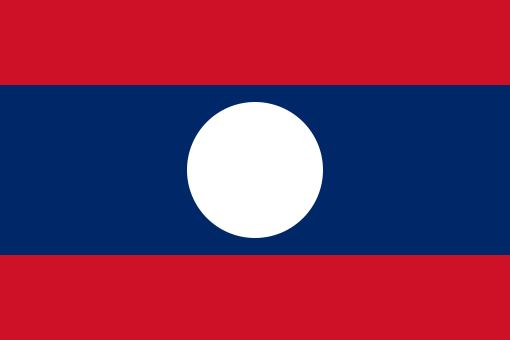
Latvijas Republika (Republic of Latvia) (from the ancient Latgalians, one of four Indo-European Baltic tribes)
Red = the readiness of the people to give the blood from their hearts for freedom and their willingness to defend their sovereignty.
Legend: a leader was wounded in battle, and sheet on which he was laid on were stained by his blood with only the center stripe of the sheet being left unstained. During the next battle, the bloodstained sheet was used as a flag. This time the warriors were successful and drove the enemy away.
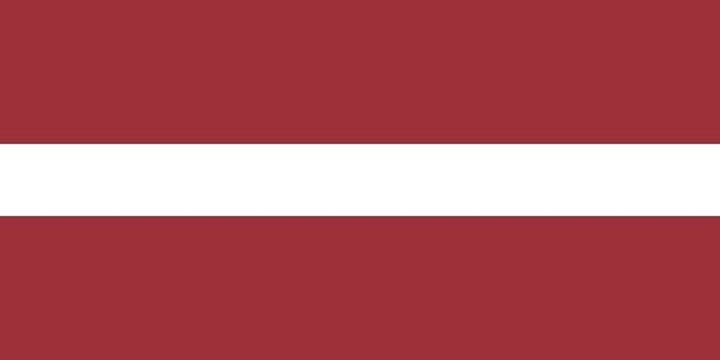
al-Jumhūrīyah al-Lubnānīyah (Republic of Lebanon) (from Mount Lebanon, in turn from the Phoenician root lbn (𐤋𐤁𐤍) meaning "white", referring to its snow-capped peaks)
Cedar = directly inspired by Cedrus libani, the symbol of the country and has its origin in many biblical references.
White = the snow as a symbol of purity and peace.
Red = the blood shed to preserve the country.
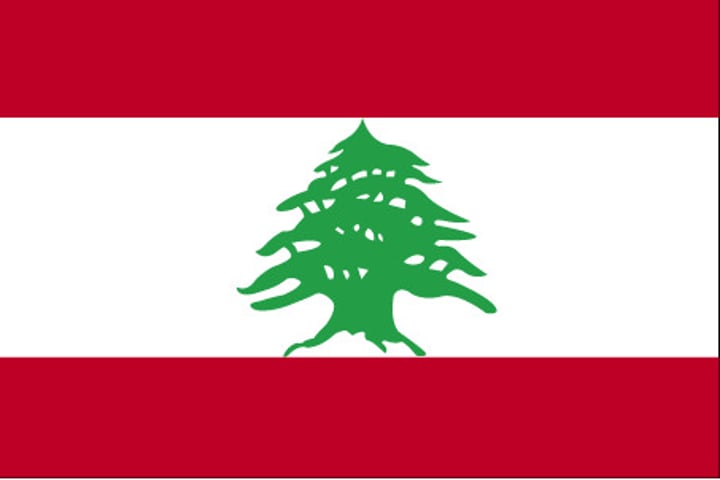
Naha ea Lesotho (Kingdom of Lesotho) ("land of the Sesotho speakers")
Black mokorotlo = a Basotho hat.
Blue = the sky or rain.
White = peace.
Green = prosperity.
Represents a state that is both at peace internally and with its only neighbor South Africa.
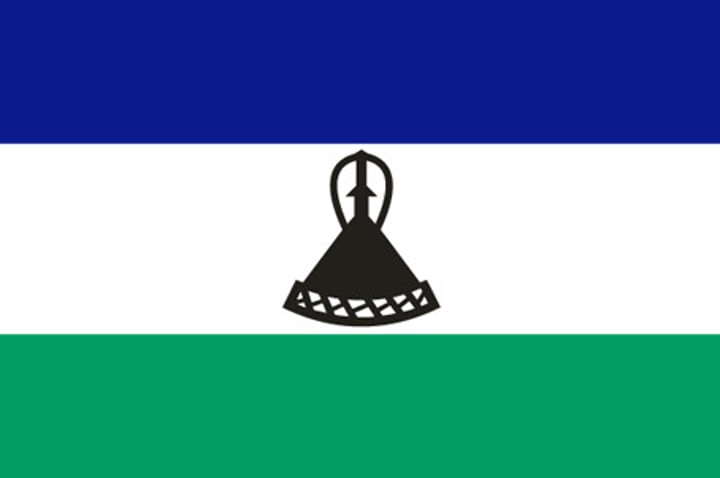
Republic of Liberia (from the Latin word liber = "free")
The Lone Star.
Close resemblance to the flag of the United States, representing the country’s founding by former black slaves from the United States and the Caribbean.
Eleven stripes = the signatories of the Declaration of Independence.
Red and white = courage and moral excellence.
White star = the first independent republic in Africa.
Blue square = the African continent.
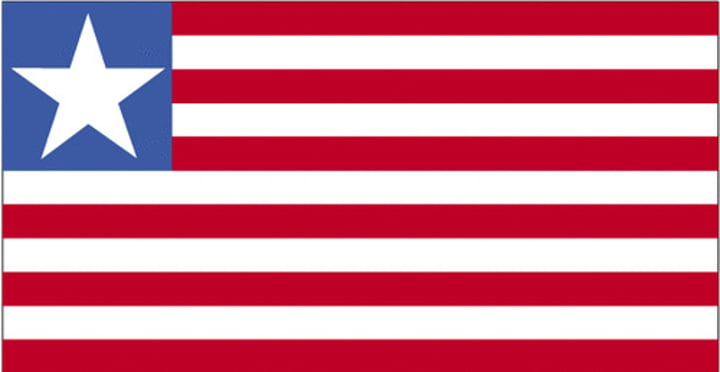
Dawlat Lībiyā (State of Libya) (from a generalized identity given to a large confederacy of ancient east "Libyan" berbers, African people(s), and tribes who lived around the regions of Cyrenaica and Marmarica)
Red = the blood sacrificed for the freedom of the country.
Black = the dark days that the people lived under the occupation of the Italians.
Green = primary wealth, agriculture, and the future prosperity of the country.
Star and crescent within the black central strip = reference to the Senussi flag and the role of King Idris in leading the country to independence.
Colors also echo the colors of the flags of the three regions: Fezzan (red), Cyrenaica (black), and Tripolitania (green).
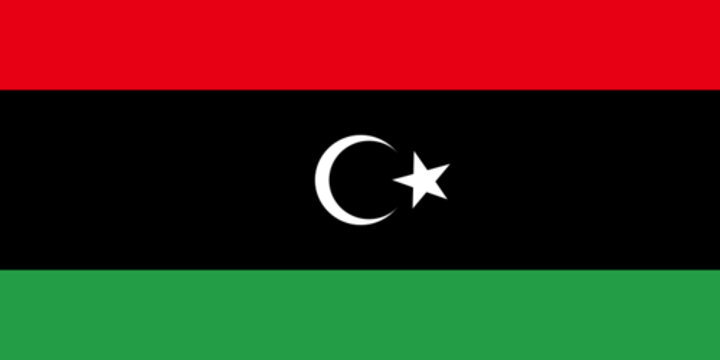
Fürstentum Liechtenstein (Principality of Liechtenstein) (from the Liechtenstein family, which takes its name from Liechtenstein Castle in Lower Austria)
Blue = the sky.
Red = the "evening fires" that are lit inside houses throughout the country.
Prince’s crown = signify the microstate’s position as a principality, and to distinguish its flag from Haiti's.
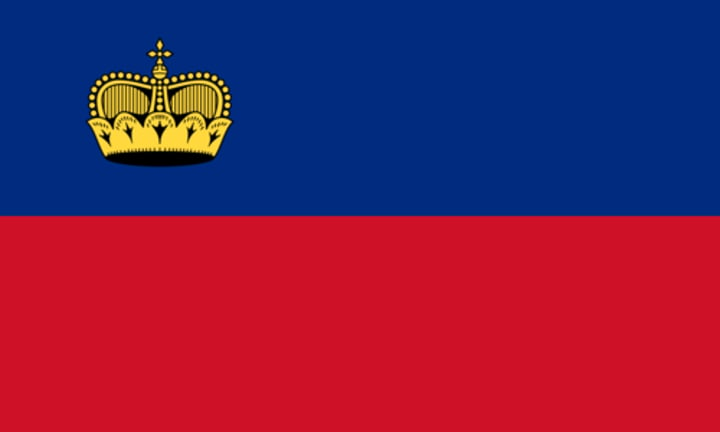
Lietuvos Respublika (Republic of Lithuania)
Colors = frequently used in folk weavings and traditional dress.
Yellow = the sun and prosperity.
Green = the forests, the countryside, liberty, and hope.
Red = the blood and bravery of those who have died for the country.
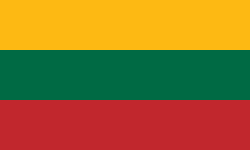
Groussherzogtum Lëtzebuerg (Grand Duchy of Luxembourg) (from the castle Lucilinburhuc (“Little Fortress”))
